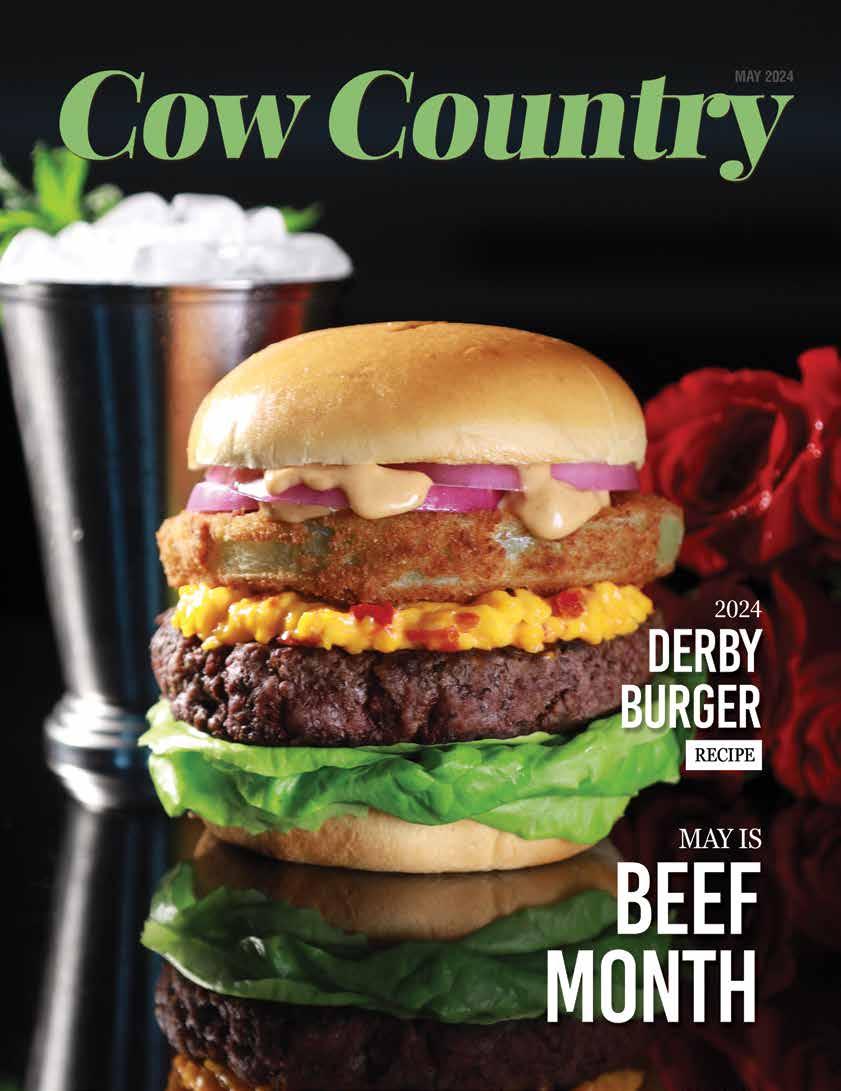
YOUR HERD. YOUR BUDGET. YOUR OPERATION.
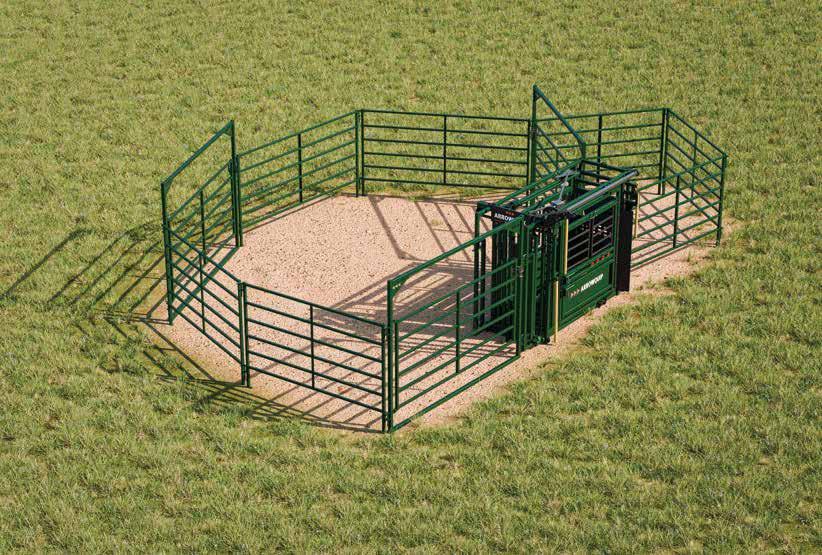
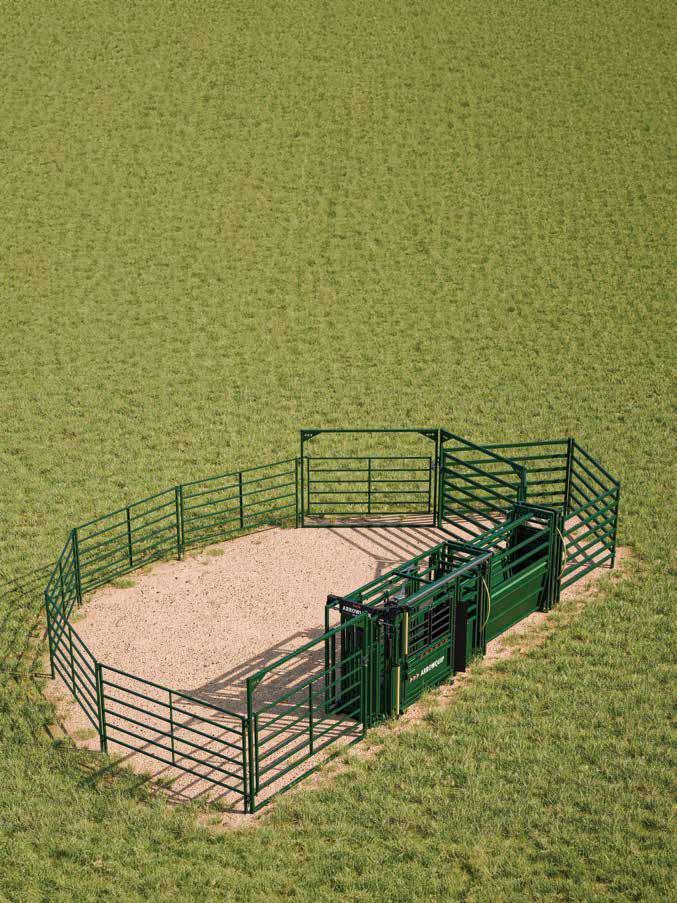





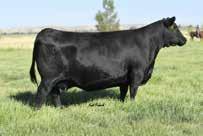



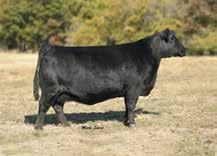
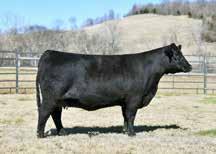

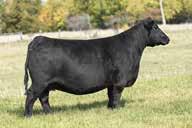




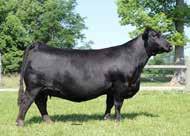











May 18, 2024 Saturday • Held at the farm • 2:00 pm EDT Brandywine Cattle Company PINE COULEE PATSY A13 A Daughter Sells by SAV Priority 7283. TEX RITA 5426 A Granddaughter Sells. SHAMROCK VALE BAR EXT 1174 A Granddaughter Sells. DAMERON NORTHERN MISS 4303 COLEMAN DIXIE ERICA 7121 A Granddaughter Sells. CONLEY PASSPORT 0440 His Offspring and Service Will Be Offered. FLATROCK PATRICIA 192 KN DOUBLE R BAR PURE PRIDE Z246 Granddaughter Sells by Conley No Limit. CHAPMAN LADY 4128 Daughter Sells by Conley Express 7211. CONLEY SANDY 8934 A full sister will offer a daughter by Conley No Limit. Angus Dispersal Sale Jon Smith Family 4249 N. 300 East // Greenfield, IN 46140 // 317.339.4211 PR LADY 909 4200-587 Dam of the $34,000 Mulben Pride 528. PENNERS MULBEN PRIDE 528 The $34,000 foundation Mulben Pride donor in the Brandywine program will offer her greatest daughters by Conley Clear Cut, Conley Passport, Coleman Glacier, SAV Extension, EXAR Blue Chip and a maternal sister by 5T Power Chip. Selling 175 Head! Cow Calf Pairs // Bred Heifers // ET Heifers // Service Age Bulls // Semen // Embryos FOR FREE REFERENCE BOOKLET PLEASE CONTACT: 406.571.3006

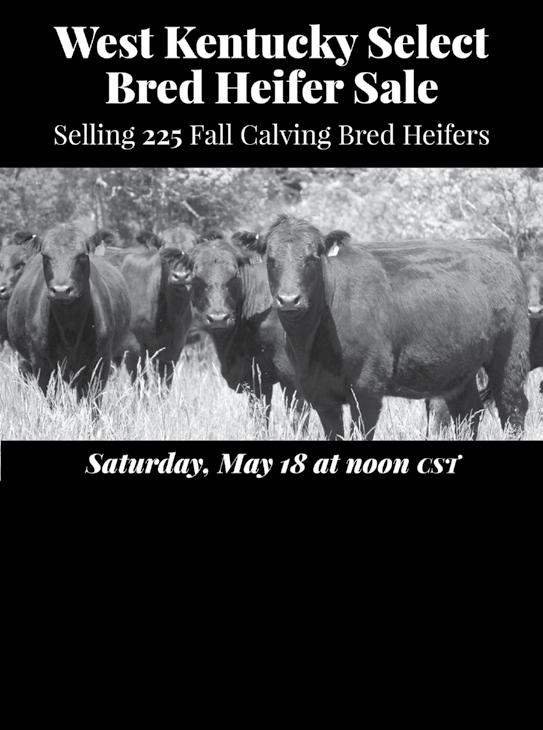
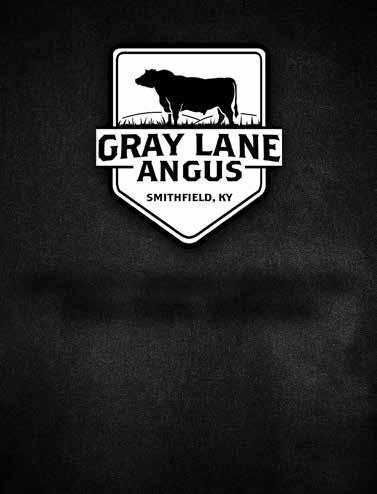

4 • Cow Country • May COLUMNISTS 07 Jeff Pettit President's Thoughts 08 Jonathan Shell Commissioner's Corner 10 Dave Maples Thoughts from Dave 22 Dr. Michelle Arnold Bovine Coccidiosis - FAQ 24 Chris Teutsch Pay Attention Now, Reduce Feeding Costs Later 58 Darrh Bullock Opportunity on Our Doorstep – BIF Research Symposium and Convention in Knoxville this June FEATURE STORIES 14 Adding Value to WKY Cattle Operations 16 Auburn Mentorship Program Pays Dividends for Aspiring Vet Student 20 Coming Soon: Kentucky Livestock Innovation Center 27 Beefing Up Social Media 12 County News 18 Legislative Update 30 Membership 32 Kentucky Beef Council 38 Kentucky Beef Network 40 The Drive 51 Kentucky Angus News 56 Calendar of Events 57 Advertisers Index 57 Classifieds BEEF MONTH On the cover: Stacy Hoehle’s Derby PLT Burger photos by Todd Brown
page 34
DERBY PLT BURGEr recipe on

A word that keeps coming to me lately is “season.” As winter abruptly turns to spring, there is a change in the seasons. As college basketball season ends, baseball becomes the new background noise each evening as we put Shepherd to bed. Calving season is all but finished as I type this, and my sights are set on breeding season, where we will breed 175 females AI in the coming weeks. By their very nature, seasons are temporary yet recurring. What is very exciting about these types of seasons is the fact that we get to experience them over and over again. In a way, we know exactly what to expect, but at the same time, it is all brand new. Every spring is different than the last. The outcome of every team’s given season, whether baseball or basketball, differs from the previous.
Seasons tend to follow a similar framework, though. The changing of winter to spring usually has plenty of twists and turns before things turn into a beautiful bloom. Whether on high school or professional teams, strength and conditioning coaches prepare their players through off-season, pre-season, and in-season workouts. It is unlikely that in-season players will really focus on pushing a one-rep max in the gym, but I am sure plenty of off-season players will. They do things at a particular time of year for a reason. Agriculture is no different. Our friends in crop production have planting season and harvest season. You won’t see anyone putting corn in the ground in October or planting wheat in June. They know that just doesn’t work.
Still, far too many in beef production don’t follow the seasons like they should. A calving season is by far the most necessary thing for profitable beef production. In fact, if you don’t have a calving season, almost none of the concepts I introduce to increase profit when discussing management practices can be adequately implemented. It is nearly effortless to control the parameters required to produce a homogenous calf crop, yet many people run a bull 365 days a year. If you begin with calving season, everything is ready to vaccinate simultaneously. Everything is ready to wean at the same time. When everything is ready to wean simultaneously, all your herd’s nutritional requirements follow the same flow throughout the year. Everything else in life seems to follow a seasonality. We must ensure we set the parameters so our cow herds do too.
Joe K. Lowe II M.S. Agricultural Economics

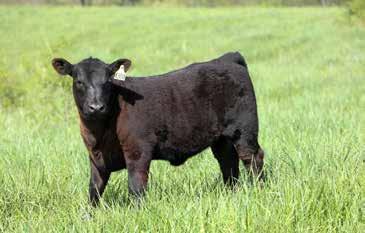
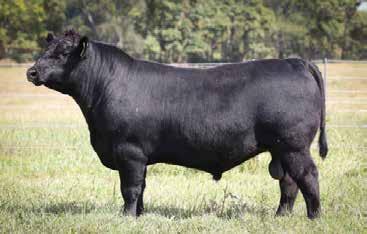

PRIVATE TREATY BULLS, BRED COWS, AND BRED HEIFERS AVAILABLE WWW.OAKHOLLOWANGUS.COM - KENNETH D. LOWE 270-202-7186 - JOE K. LOWE II 270-202-4399 Email joe.lowe@icloud.com to receive an additional monthly email newsletter Oak Hollow Hallmark 2293- Semen is available through ABS.
EXECUTIVE COMMITTEE
OFFICERS:
President
JEFF PETTIT Sebree
President Elect
RANDY WARNER Sharpsburg
Vice President
ALLAN BRYANT Eminence
Treasurer
KEN ADAMS Upton
Past President
ANDY BISHOP Cox’s Creek
KCA Program Chairman
DANIEL HAYDEN Whitesville
KBC Chairman
RYAN MILLER Lebanon
KBN Chairman*
ALLAN BRYANT
Beef Solutions Chairman*
DANIEL HAYDEN *ex officio
REGIONAL DIRECTORS:
REGION 1
Wayne Zoglmann, John Mark Brown, Ashley Holloway, Leland Steely, Gary Woodall, Coleman Ladd, Susan Zoglmann, Bill Plemmons, Kenton Howard, Sara Roberson
REGION 2
Phyllis Gentry, Joe Lowe, Allison Nissley, Rayetta Boone, Robbie Hatfield, Chris Imbruglio, Maggie Webb, Mike Jones, Corbin Cowles, Glenn Byrd, Isaac Thompson, Kenneth Green, Trent Jones, Brian Manion, Joe Mike Moore, Amy Cecil
REGION 3
Amanda Hall, Nathan Lawson, James Brown, Phillip Douglas, Larry Bryant, Lincoln Clifford, Abbey Biddle, Ben Tinsley, Kevin Perkins, Kyle Bush, Michelle Simon, Craig Retzlaff
REGION 4
Amy White, Brad Reynolds, Chad Anglin, Phillip Stamm, Danielle Harmon, Bruce Witt, Jodi Purvis, Mike Ravencraft, Ronnie Lowe, Danny Callahan, Jason Crowe, Rob Amburgey
REGION 5
Adam Chunglo, Brent Woodrum, Tommy Spalding, Dean Craft, Doris Hamilton, Rick Brewer, Brent Williams, Anne Bays, Terry Mattingly, Ryan Miller, Phillip Reese, Tommy Glasscock
Executive Committee members in bold

beef month recipes pages 35 & 37

KCA PAST PRESIDENTS:
1972-73 Jere Caldwell† - Boyle 2004 Paul Napier - Lincoln
1974-77 Smith T. Powell† - Lincoln 2005
Eddie Young - Washington
1978-79 Larry Lovell† - Union 2006 Greg Ritter† - Barren
1980-82 John Masters† - Fleming 2007 Don Pemberton - Christian
1983-85 Seldon Hail† - Laurel 2008 Billy Glenn Turpin - Madison
1986-87 Bob Vickery† - Wayne 2009 Scotty Parsons - Christian
1988 Glenn Mackie - Bourbon 2010 Corinne Kephart - Shelby
1989 Dale Lovell† - Muhlenberg 2011 Greg Robey - Mercer
1990 Steve Henshaw† - Union 2012 Mike Bach - Bath
1991 Jerry Fraim - Grayson 2013 Don Reynolds - Hart
1992 Glen Massengale† - Wayne 2014 Steve Downs - Marion
1993 Dell King - Christian 2015 Gary Woodall - Logan
1994 Kenneth Lowe - Warren 2016 David Lemaster - Clark
1995 Dr. J.L.Cole - Monroe 2017 Chuck Crutcher - Hardin
1996 Harvey Mitchell - Mercer 2018 Bobby Foree - Henry
1997 Jim Naive† - Spencer 2019 Tim White - Fayette
1998 Shelby Hughes - Logan 2020 Steve Dunning - Christian
1999 Hoppy Lovell - Barren 2021 Chris Cooper - Madison
2000 Charles Miller - Jessamine 2022 Cary King - Mercer
2001 Larry Clay - Perry 2023 Andy Bishop - Nelson
2002 Jack Kimbrough† - Shelby
2003 Mark Williams - Crittenden †Deceased
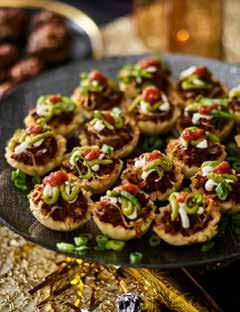
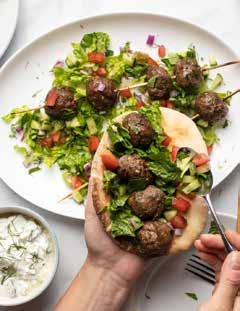
Dave Maples Executive Vice President
Carey Brown Chief Operating Officer
Kenny Allen Beef Solutions Operations Manager
Kelly Baird KBC Director of Communications
Todd Brown Graphic Designer
Bradon Burks KBC Director of Education
Rachel Cain Membership and Communications Coordinator
Amelia Carter KBC Director of Industry Relations
Danny Coy Video Production Specialist
Jake Harrod KBN Program Coordinator
Dan Miller KBN Industry Coordinator
Debby Nichols National Advertising Sales, LAN
Katie Pratt Communications Manager
Alex Scott KBC Director of Nutrition
Becky Thompson Director of Kentucky Beef Network
Kelly Tucker KCA Collections & Compliance
Nikki Whitaker Director of Operations & Policy
ASSOCIATION limits its responsibilities for any errors, inaccuracies, or misprints in advertising or editorial copy. Advertisers and advertising agencies assume liability for all content of advertisements made against the publisher.
6 • Cow Country • May
VOLUME 37 • ISSUE 5 COW COUNTRY is published monthly by THE KENTUCKY CATTLEMEN’S ASSOCIATION. The publisher reserves the right to refuse any material which he feels is unsuitable for the publication. Although the highest
be maintained, the
176 PASADENA DRIVE • SUITE 4 • LEXINGTON, KY 40503 (859) 278-0899 • WWW.KYCATTLE.ORG • INFO@KYCATTLE.ORG
journalistic ethics will
KENTUCKY CATTLEMEN’S

Hello y’all!
President's Thoughts
Jeff Pettit KCA President
Well, it’s May, and everything is green at my place. I much prefer that to the “mud brown” color of winter!
Ironic how things work out. I kicked off last month’s article sharing my thoughts on Easter and how it relates to planting and harvesting. As I set here writing this month’s article, it is April 8, and the whole country is talking about the eclipse that is supposed to happen this afternoon. When I think about an eclipse, my mind always travels back to the scripture describing the day Christ died on the cross. Luke 23; 44-45 NLT states, “By this time it was about noon, and darkness fell across the whole land until three o’clock. The light from the sun was gone….” As I experience the eclipse today, I will be thinking about the time when “the light from the Son was gone.” I am sure it was a dark, scary time for those that day, but as dark and scary as it may have been, a blessing sprang forth from the events of that dark day!
April’s article ended talking about us as producers doing a better job with the tools that we have to leave a better beef industry for the next generation. I hope we all have a vision for the next generation and what challenges that they may face. I also hope we have ideas for possible solutions to those concerns, not only to help the next generation but to also ensure we can still supply the demand for what we produce, BEEF! Folks, we must realize the importance and significance of what we do each day and that we are actually producing food for the world! As a producer, you are not only producing a prime eating experience for someone, you are producing a natural healthy source of protein for a hungry child as well! So, let’s remember that everything we do will end up on someone’s plate at some point.
For May’s “Traceability tidbit,” some of you may not realize how the current rule affects you, here is a snapshot for you to ruminate on:
Final Rule: Traceability for Livestock Moved Interstate January 11, 2013
Summary of General Requirements by Species
Effective Date: March 11, 2013
The Traceability for Livestock Moved Interstate rule establishes minimum national official identification and documentation requirements for the traceability of livestock moving interstate. The species covered in the rule include cattle and bison, sheep and goats, swine, horses and other equines, captive cervids (e.g., deer and elk), and poultry. The covered animals moved interstate, unless otherwise exempt, would have to be officially identified and accompanied by an interstate certificate of veterinary inspection (ICVI) or other movement document.
You may say, “Well, I never move or sell anything that goes across the state line.” However, if you sell a cow or bull over 18 months old at a stockyard, and it must cross the state line for any reason, including processing, this rule then applies. Tags are supposed to be implemented prior to shipping. These tags are currently being supplied free of charge by the state vet and inserted at the stockyard/buying station before the animals are shipped.
Another observation here, this rule is over 10 years old. This conversation didn’t just start; it has been a work in progress for years. I will say our progress has been very slow, and if we don’t speed up our progress, we could see a time where the demand for
ADT Rule March 2013: Interstate Movement Requirements for Cattle NO
RULE DOES NOT APPLY
Are the cattle moving interstate? BEEF
Are the cattle sexually intact and 18 months of age or older?
DAIRY
YES
Are the cattle steers, bulls, or females?
All cattle of any age used for rodeo, shows, exhibitions, or recreational events
1. Official ID required *
2. ICVI and official ID numbers recorded on certificate
STEERS: Applies only to dairy steers born after 3/11/13
1. Official ID required*
2. ICVI required*
• Recording IDs on movement document NOT required
BULLS: Dairy bulls born after 3/11/13 or 18 months or older
1. Official ID required*
2. ICVI required*
• Recording IDs on movement document REQUIRED*
FEMALES: All dairy females regardless of age
1. Official ID required*
2. ICVI required*
YES
• Recording IDs on movement document REQUIRED* NO
1. Official ID required*
2. ICVI required*
• Recording IDs on movement document REQUIRED*
1. Official ID does not apply
2. ICVI required*
• Recording IDs on movement document NOT required
*Exemptions may apply, see a full list of exemptions for official ID, ICVIs and recording IDs on movement documents at www.interstatelivestock.com or visit www.aphis.usda.gov/sites/ default/files/adt-trace-flowchart-cattle.pdf for the original diagram.
American beef is negatively impacted in the future. How might that affect you, your operation or your children’s future on that operation?
In closing, I recently had the opportunity to visit Marion County Cattlemen's Association, and the Jessamine County Cattlemen’s Association hosted our March KCA board meeting. Both groups did an outstanding job representing their producers and provided great meals. I wanted to thank them both for their hospitality and leadership with KCA!
Happy trails until next month!

May • Cow Country • 7

Commissioner's Corner
Jonathan Shell Agriculture Commissioner of Kentucky
May is Beef Month. In honor of this month, I’m proud to let you know Kentucky Attorney General Russell Coleman and I are standing firm with Kentucky’s meat and poultry processing industries. Our mostly small, family-run operations are being targeted by a new Biden administration proposal.
The U.S. Environmental Protection Agency announced far-reaching requirements that would decimate small operators, forcing them to build massive and costly water treatment plants. Complying with the regulation could cost millions of dollars for Kentucky entrepreneurs for initial installation and hundreds of thousands in annual maintenance and testing. Many mom-and-pop meat producers would likely be forced out of business.
I’m pushing back against the disastrous plan in a comment letter to the EPA condemning the policy and questioning the legality of the proposal. You can review the comment letter at https://tinyurl. com/y3p9rsnj.
Agriculture is economic development. In Kentucky, it’s an $8 billion industry. Even under the EPA’s preferred option, 16 processing facilities nationwide are expected to close. If the EPA’s reckless rule closes even one processing facility in Kentucky, it would crush the entire supply chain, including jobs.


I’ll always stand up for our farming communities, not only to secure the food supply but to protect the heritage of what has become a way of life for many Kentuckians.
About 120 meat and poultry processors are operating in Kentucky. The EPA’s rule would devastate Kentucky farm families and disrupt the entire farm-to-table supply chain. With the price of processed beef potentially reaching record highs this year as a result of historic inflation, the federal government should be giving families a break, not piling on. The Biden administration’s overburdensome regulation would erase millions of dollars invested in Kentucky agriculture. With a focus on rural economic development, conservative estimates show Kentucky has invested nearly $700 million in agricultural development and financing.
According to the Kentucky Department of Agriculture, there are no known or historical claims of a meat or poultry processor in Kentucky with any reported violation of the Agriculture Water Quality Act, which has proactively regulated surface and groundwater resources for the past 30 years.
EPA’s one-size-fits-all proposal is a solution in search of a problem that simply doesn’t exist, at least not here in Kentucky.




A.W. GRAHAM LUMBER LLC Website: www.grahamlumber.com Phone: 1-877-845-9663 -Log Cabin Siding Wood & Vinyl -1x6 & 1x8 T&G Knotty Pine -2x6 T&G SYP & Treated -6” & 8” Cedar Bevel Siding -Framing & Treated Lumber -Rebar & Concrete Wire -Fence Post & Fence boards -Wood Barn Siding -Used Guardrail -20’ & 40’ Used Cargo Containers OUR DIRT CHEAP PRICES ARE POSTED ON OUR WEBSITE OR CALL FOR A DELIVERED PRICE TO YOUR LOCATION CHAROLAIS BULLS AND BRED HEIFERS John Allison 545 Eminence Road New Castle, KY 40050 (502) 220-3170 Allison Charolais Charolais Breeder Since 1962 • Bulls Available Ø Bull calves out of HCR Answer 2042 and HCR SPIRIT 4007. Ø Bred
545
New
David Carter, Farm Manager 502-706-0075 CHAROLAIS BULLS & HEIFERS AVAILABLE John Allison, Owner 545 Eminence Road New Castle, KY 40050 (502) 220-3170 Allison Charolais Charolais Breeder Since • Bulls Available Ø Bull calves out of HCR Answer HCR SPIRIT 4007. Ø Bred for calving ease and growth. Ø Bulls for both purebred and commercial Ø Yearlings and two-year-olds available. Ø Bred heifers to calve in fall available. John Allison, Owner 545 Eminence Road New Castle, KY 40050 502-220-3170 David Carter, 502-706-0075 Allison Charolais Charolais Breeder Since 1962 • Bulls Available Ø Bull calves out of HCR Answer 2042 and HCR SPIRIT 4007. Ø Bred for calving ease and growth. Ø Bulls for both purebred and commercial breeders. Ø Yearlings and two-year-olds available. Ø Bred heifers to calve in fall available. John Allison, Owner 545 Eminence Road New Castle, KY 40050 502-220-3170 David Carter, Farm Manager 502-706-0075 8 • Cow Country • May ALL AGES WELCOME SCHEDULE A GROUP VISIT CHOOSE YOUR LESSON PLAN CATERING IS AVAILABLE VISIT US TODAY! BBURKS@KYCATTLE.ORG (859) 382-4303
raham ood Deals
for calving ease and growth. Ø Bulls for both purebred and commercial breeders. Ø Yearlings and two-year-olds available. Ø Bred heifers to calve in fall available. John Allison, Owner
Eminence Road
Castle, KY 40050 502-220-3170
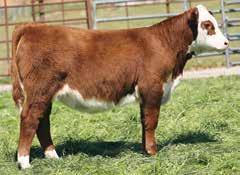

10/16/23
BF 157F RITA 42L ET
• AHA P44531848
• Homozygous Polled
JW 1857 Merit 21134 x NJW 1A 173D Rita 157F
CED +11.2 / BW +1.5 / WW +92 / YW +150 / MILK +32 /
UDDR +1.3 / TEAT +1.3 / REA +1.00 / MARB +.45 / CHB +202
Breed leading EPD profile in this donor prospect out of Rita 157F.


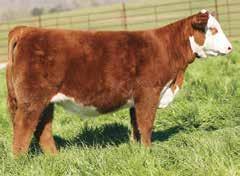
BF FULL OF LIFE 60L ET
9/9/23 • AHA 44537724 • Horned
KJ BJ 58Z Contender D56 ET x BF Full of It 5600 ET
CED +3.4 / BW +2.6 / WW +62 / YW +92 / MILK +28 /
UDDR +1.1 / TEAT +1.1 / REA +.86 / MARB +.25 / CHB +153
Short marked and stout horned show heifer prospect.

• AHA P44530211 • Polled
RST Final Print 0016 x BF 4013 Posh 12H ET
CED +7.9 / BW +0.9 / WW +80 / YW +121 / MILK +33 / UDDR +1.4 / TEAT +1.4 / REA +.92 / MARB +.39 / CHB +182
Excellent numerical profile with style out of Posh 12H

BF P&R NOVEL 64L ET
9/26/23 • AHA 44542753 • Horned
TFR KU Roll The Dice 1326 x BF Novel 5502 ET
CED –1.4 / BW +3.9 / WW +68 / YW +109 / MILK +31 /
UDDR +1.2 / TEAT +1.2 / REA +1.00 / MARB +.14 / CHB +152
Elite horned show heifer prospect out of Novel 5502.
View the sale catalog online now at burnsfarms.com & layton auction.com
• Videos at liveauctions.tv

Since 1952

Burns Farms 1 THAnnual Female Event 12 noon CDT SATURDAY, MAY 1 1 Pikeville, TN 113 Head of Elite Herefords sell as 70 Lots! Herd Bull Prospect • Fall Show Heifer and Donor Prospects • Fall Bred Heifers Spring Cow/Calf Pairs • Fall Cow/Calf Splits and 3-in-1 Pairs 4 DAVID BURNS (615) 477-5668 E-mail: burnsda2@gmail.com Zach Day, Herdsman (859) 588-6271 Pikeville, Tennessee burnsfarms.com You Dream. We Deliver. Dustin N. Layton • (405) 464-2455 laytond@yahoo.com Chisolm Kinder • (405) 747-4683 laytonauction.com TAL #6690 TFL #5818 BF 157F RITA 59L ET 11/7/23 • AHA P44531869 • Polled RST Final Print 0016 x NJW 1A 173D Rita 157F CED +1.8 / BW +3.6 / WW +91 / YW +149 / MILK +30 / UDDR +1.2 / TEAT +1.1 / REA +.91 / MARB +.22 / CHB +187 Goggle-eyed donor prospect out of Rita
157F.
BLZ GEMINI 7233 229G L042ET 8/10/23 • AHA P44509081 • Homozygous Polled Green JCS Makers Mark x EXR Gemini 7233 ET
WW +63 / YW +101 / MILK +21 / UDDR +1.5 / TEAT +1.5 / REA
/ MARB +.27 / CHB
CED +8.4 / BW +0.2 /
+.63
+166 Big spread with eye appeal. BF 12H POSH 33L ET 10/11/23

Thoughts From Dave
Dave Maples Executive Vice President
“Raised with Respect.” As I was taking a phone call in early April, the advertisement for the April 12 BQA meeting in Elizabethtown popped up on my computer screen. I looked at the ad, and the headline “Raised with Respect” really hit me. As cattlemen and as members of the beef supply system, we should honor the words “Raised with Respect” when it comes to our cattle.
The beef supply system has many different components that all have to work together to produce a safe product that the consumer desires. The BQA program and the program on April 12 are doing their parts in connecting several components of the system. When I looked at the ad, I noticed that Sysco was one of the April 12 event sponsors. Sysco is one the nation’s largest food distributors. Why would Sysco want to sponsor a BQA training? Because they distribute the product that you raise to food service businesses and restaurants. Sysco wants to deliver a quality, safe product without injection site blemishes, and BQA helps educate producers on how to correctly administer vaccines to prevent those. Then on the ad, I saw the CAB logo. CAB is one of the sponsors and again one of the largest branded beef programs.
Next, I noticed that Louisville chefs Josh Moore of Volare and Zach Wolf of Ole Restaurant Group were on the agenda and would prepare the meal for the participants. To have two very busy, well-respected chefs participate in a meeting like this was very impressive, and it spoke to the importance of the BQA principles from the restaurant industry’s perspective.
Train and retrain is necessary for any supply system, and it is no different with beef. It doesn’t matter if you are a purebred business, cow-calf operation, backgrounder, stockyard, order buyer, dealer, feedlot, feed manufacturer or veterinarian, you are a participant in the beef supply
system. No segment is above or below the other. The process of training and retraining is ongoing.
The program developers and the sponsors of the April 12 event did a nice job including many parts of a complete beef supply chain. Kevin Laurent with University of Kentucky Extension and Ben Lloyd with the Kentucky Beef Network conducted a chute-side training and cattle handling work stations. Also, UK’s Darrh Bullock and Katie VanValin addressed best management practices. Dr. Michelle Arnold spoke from a veterinarian’s point of view about vaccination protocols and procedures.
I hope the goal of providing training opportunities for the first timer and a retraining occasion for seasoned cattlemen is appreciated and that
we as participants in the beef supply chain continue to provide the highest quality, safest beef in the world.
You can read more about the April 12 event on page 38.
My highlight county this month is Boyd County. Rachel Cain and I made the trip to Ashland to the Highland Cattlemen’s Association meeting. Lyndall Harned, Boyd County’s long-time extension agent, was a gracious host. Lyndall gave us a tour of the very impressive Boyd County extension complex and fairgrounds. If you ever get the chance to attend a meeting at the facility, you will be impressed. Also, Lyndall invited Rachel and I to visit with Tyler Wells and tour the AW Meat House, a new local meat processing facility. Again, it was another very impressive business.

get the recipe at www.kentuckycattlemensbeef.com or check out page 34! 10 • Cow Country • May






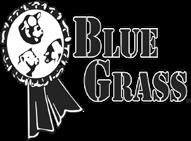

May • Cow Country • 11 L.A. Yount Haying Equipment Rose Farm Supply Sanford & Sons Sales & Service Bowling Green, KY Meade Tractor GF 102 & 1002 SERIES | Rotary Tedders 8'6" – 25’7" working widths • mounted & trailed models DRY WITH THE SPEED OF LIGHT Exclusive DigiDrive ® couplers provide low maintenance and long life Multiple options and adjustments for tedding in various crop conditions Hydraulic folding provides easy transport between work and field Reduce drying time with steep pitch angles and asymmetrical tines LIVESTOCK MARKETING GROUP bgstockyards.com Blue Grass Albany 1274 Hwy 90 W Albany, KY 42602 606-387-4681 Jeffery Cyphers, Manager 270-459-1193 Blue Grass East-Mt. Sterling 3025 Owingsville Road Mt. Sterling, KY 40353 859-498-9625 Jeff Copher, Manager 859-229-7587 Blue Grass Campbellsville 265 Airport Road Campbellsville, KY 42719 270-465-4051 Ronnie Choate, Manager 270-766-8240 Farmers Stockyards 255 Helena Road Flemingsburg, KY 41041 606-845-2421 Corey Story, Manager 606-209-1543 Blue Grass Richmond 348 K Street Richmond, KY 40475 859-623-1280 Jim Dause, Manager 859-314-7211 Blue Grass South-Stanford 277 Cordier Lane Stanford, KY 40484 606-365-0665 David Holt, Manager 502-680-0797 Blue Grass Internet Sales 4561 Iron Works Pike Lexington, KY 40588 859-255-7701 Adam Menker, Manager 419-310-5344 Upcoming Sales Blue Grass South Traditions Hereford Influence Spring Feeder Sale Thursday, May 9 @ 10:30 AM The Charolais Influenced Feeder Calf Alliance Thursday, May 16 Blue Grass Campbellsville Holstein Sale Saturday, May 18 @ 1:00 PM Blue Grass Lexington KY Certified Hereford Influence Sale Monday, May 20 @ 10:30 AM Let us help with your livestock marketing decisions! Blue Grass Lexington 4561 Iron Works Pike Lexington, KY 40588 859-255-7701 Jeremy Shryock, Manager 859-967-6479
BARREN COUNTY NEWS
submitted by
James W. Bailey
The Barren County Cattlemen’s meeting was held Thursday, March 14 at the Barren County High School Trojan Academy. During the meeting, Chris Schalk of the University of Kentucky Cooperative Extension Service presented a program on potash in forage
production. Pictured from left to right is Jon Keightley and Daniel Craine, representing ProSolutions of Hiseville, Schalk and Frank Rowland, representing the Barren County Cattlemen’s Association. ProSolutions sponsored the delicious steak dinner.

GRANT COUNTY NEWS
submitted by
Tim Henry
The Grant County Cattlemen would like to welcome our new veterinarian Dr. Jessie Kinman and her staff to Grant County. Dr. Kinman is a native Grant Countian. Dr. Kinman chose to open Bluegrass Vet to serve Grant and surrounding counties.

Ryker Lee Groce, 6, looks out at his grandparents’, Gary and Cindy Wilson, cattle on a recent visit to their Barren County farm. Ryker likes help his grandparents, who are members of the Barren County Cattlemen’s Association, on their farm and in their garden. He especially likes to ride on the tractor with his Pa to help with winter feeding. Photo submitted.

12 • Cow Country • May
Pictured from left are Beth Wolfgang, Dr. Jessie Kinman, Megan Kinman and Troy Klaphake.
METCALFE COUNTY NEWS
submitted by Moe Hensley
On March 28, the meeting of the Metcalfe County Cattlemen’s Association took place at the Metcalfe County Extension office. There was a great crowd on hand to for the event.
ADM (Archer Daniels Midland) was the sponsor for the evening, and everyone enjoyed the delicious ribeyes prepared by the Cooking Crew, as well as the homemade desserts.
ADM is one of the world’s largest nutrition companies, leading in both human and animal nutrition. Adam Harmon, ADM’s local representative, was on-hand to explain all the services they provide. Jason Edmondson, ADM nutritionist, presented a
PowerPoint on how to properly read and understand mineral tags. It was a very informative presentation.
Routine business was followed by talk of the calendars that were available for anyone to take. There was a lot of information in these calendars related to spring and fall calving, forage management and many other tips including quick glance due dates for calving.
It was also announced that they were looking for volunteers for the Cattlemen Scholarship Committee. After some really nice door prizes from ADM, the meeting was adjourned.
“Be stubborn about your goals, but flexible about your methods.”
SIMPSON COUNTY NEWS
submitted by Jesse Jepson
The Simpson County Cattlemen’s Association and Simpson County Cooperative Extension Service partnered with several organizations to send hay and feed supplements to farmers in Canadian, Texas, who were affected by the Smokehouse Creek Fire. The fire is the largest wildfire in the state’s history. Thus far, the Simpson County association has sent two semi-truck loads of 4 ft. round bales and purchased mineral blocks and feed that have been donated by local producers and through funding from its members, the Logan County Cattlemen’s Association, CaldwellLyon Cattlemen’s Association and the Kentucky Cattlemen’s Association. The Kentucky Baptist Disaster Relief Fund furnished the fuel for the 2,200-mile round trip. The Tennessee Baptist Disaster Relief Fund donated the two semi-trucks, the trailer and driver to transport the hay.


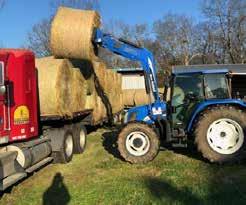

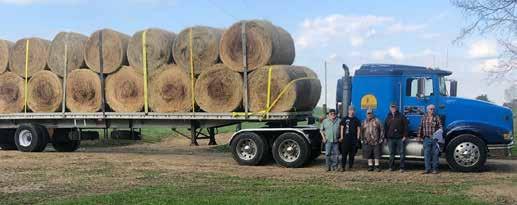
May • Cow Country • 13
Adam Harmon & Tom Hughes
Jason Edmondson
Adding Value to WKY Cattle Operations
Katie Pratt Kentucky Cattlemen's Association
Kentucky Beef Network Field
Associate Ben Lloyd has relished the opportunity to build a quality cattle program from the ground up in Western Kentucky. For the past two decades, Lloyd has helped cattle producers improve their herds, find new market opportunities and increase their profits by adding value to their cattle.
“I really enjoy helping farmers and putting money in their pockets,” said Lloyd, who was one of the first hires for the Kentucky Beef Network.
Prior to becoming a field associate, Lloyd managed a ranch in Georgia. His previous cattle experience and knowledge of the industry helped the Virginia native instantly connect with Kentucky producers.
“There are certain people that just kind of draw you in with their uniqueness and personality, and Ben has been one of those for me,” said Don Kidd, Ohio County producer. Over the years, Lloyd has helped producers design facilities and make management and economic decisions through one-on-one farm visits and group educational presentations. One producer he worked a lot with over the years is Rod Kuegel in Daviess County. He’s also now working with Kuegel’s son Clay, who has returned to the operation.
“Half of our success with our operation has been due to Ben’s influence,” Rod Kuegel said. Helping farmers find solutions to challenges and keeping them in the know when it comes to the latest tools and techniques is important for Lloyd. He works with a number of partners including veterinarians, industry representatives and Cooperative Extension agents to help his producers stay on top of industry trends and issues.
“He is a key resource for extension, helping us identify needs and issues
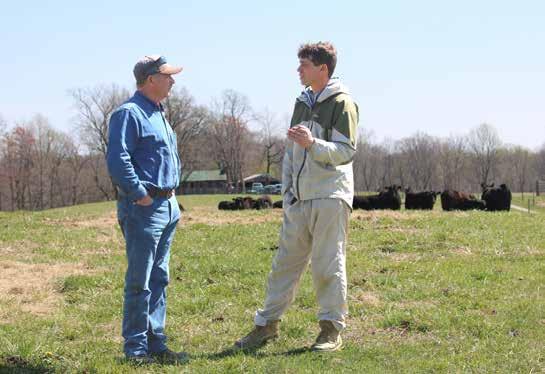
faced by beef cattle farmers in our area. We, in turn, address those issues by education and research focus,” said Clint Hardy, Daviess County agriculture and natural resources extension agent. “Beef cattle yield and profitability are better because of tackling challenges our farmers face with a team that includes Ben and the KBN, Cooperative Extension and our farmer leaders, whose involvement is key to meeting the needs of the industry.”
Early in his KBN career, much of Lloyd’s focus was on helping producers participate in CPH sales. At that time, these value-added sales were new to the area.
“Ben was helpful in the early days of the CPH sales,” said Jimmy Gilles, Daviess County producer. “He helped producers understand the program and follow its vaccination protocols.”
Lloyd took his position a step further and learned how to grade cattle, which was a valuable resource for producers in the early days of CPH. Lloyd along with Warren Beeler and
Mike Bell traveled to producers’ farms and helped them with pregrading the cattle and understanding the CPH program’s requirements.
As an advocate for CPH cattle, Lloyd traveled to numerous Western states to meet with feedlot representatives and build up interest for the program’s cattle. As a result, producers who sold in the CPH sales were able to combine their herds and sell them as load lots, which netted higher returns for the consignors.
Today, CPH sales are held in Owensboro four times a year. These sales are producer led and producer driven. Lloyd works with these producer leaders, Extension and the Kentuckiana Livestock Market to successfully execute the sales.
Gilles also relies on Lloyd’s help to get his bulls ready for the market. He sells some of his bulls through the Union County Bull Sale, which Lloyd help start.
When the sale began, the county did not receive County Agricultural Investment Program (CAIP) cost
14 • Cow Country • May
share funds, so the sale initially focused on quality older bulls because they were less expensive than younger ones. Over the years, the sale, now in its 22nd year, has evolved. The sale is open to all breeds, and most bulls in the sale are around 2 years old and do qualify for CAIP cost share. The sale attracts consignors and buyers from across the region.
“It’s been good for our local producers,” said Katie Hughes, Union County agriculture and natural resources extension agent. “They have the option to purchase a quality bull without having to leave the county.”
Ohio County beef producer Danny Gray has sold his bulls in the Union County sale since its inception. Prior to the sale, he sold his bulls on the farm. In most years, the sale has helped him capture a premium for his bulls.
“The sale has been really good on the whole for me,” Gray said.
To help producers prepare their animals for the sale, Lloyd along with Union County veterinarian Dr. Caleb Jenkin help producers with breeding soundness exams, vaccinations and deworming in the weeks leading up to the sale.
“I work with Ben in various ways. Mostly, I work jointly with cattlemen

either Ben has introduced to myself or cattlemen that I have introduced to Ben,” Dr. Jenkin said. “I've enjoyed working with Ben over the last 11 years since returning to Union County to practice veterinary medicine. Ben has definitely been an asset to the cattlemen of Western Kentucky.”
Along with Dr. Jenkin, Lloyd works with Dr. Tim Gardner, a Scottsvillebased veterinarian, to help meet producers’ needs when it comes to cattle reproduction. Lloyd will coordinate a schedule for Gardner to do pregnancy checks and pelvic exams at several area farms 10 to 12 times a year.
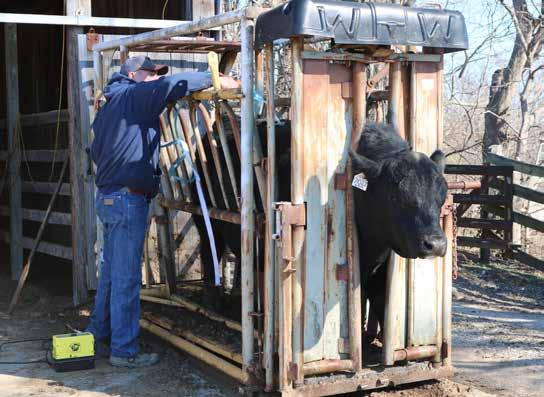
“We don’t have a local large animal vet, so Ben’s been our link to area veterinarians to get our large animals get the care they need, whether its BSEs for bulls or pregnancy checks for our heifers,” Gilles said.
Gilles and Gray both sell their cull cows to Beef Solutions, which processes and markets Kentucky Cattlemen’s Ground Beef. Lloyd helps coordinate load lots of Western Kentucky cattle to send to processors, which makes cattle transportation easier and more economical for producers.
“Ben loves what he does and he does a good job,” Gray said. “I consider him to be a good friend.”
Lloyd has also been a big supporter of youth agricultural related programs and has spoken with numerous 4-H, FFA and community college vet tech and agriculture classes across the area. In some cases, he offered youth the opportunity for BQCA certification and chute-side trainings. He continues to work with young people as they begin to grow their own operations, like Daviess County producer John Harralson. Harralson returned to full-time farming in 2020 and opened Burley’s Harvest Market in 2023.
“I’ve known him since I was 13 or 14 years old,” Harralson said. “He’s helped me with pastures, hay and managing cull cattle. He’s always been a resource for me to reach out to. I’m not sure that I would otherwise have the confidence to do it by myself.”
May • Cow Country • 15
Auburn Mentorship Program Pays
Dividends for Aspiring Vet Student
Lily Becknell West Jessamine High School
My name is Lily Becknell, and I am a senior at West Jessamine High School. I was raised on a beef cattle farm in Nicholasville, and I now manage the herd alongside my father.
I was selected to be a part of the Auburn University Veterinary Student Mentorship Program. In this program, students and faculty at Auburn’s College of Veterinary Medicine and staff at the Kentucky Cattlemen’s Association partner to mentor 10 Kentucky high school students. My experience on the farm has given me insight into the struggles and joys of working with large animals, and it has guided me toward discovering my passions throughout my farming career. Pair this with my dream of becoming a veterinarian that has been blossoming since I was a young child, and this program poured into those two passions. The other high school students in this program share the same passion as me when it comes to veterinary medicine.
This program has been so beneficial to us as students and has given us the opportunity to collaborate with individuals who are driven by the same passion. We have formed connections with each other, networked with Auburn professors and gained knowledge about how to advocate for ourselves during the veterinary application process.
We began this program by attending the Kentucky Veterinary Medical Association conference in Louisville, where we met with Auburn veterinary students and staff. We then attended the Kentucky Cattlemen’s Association convention at the Central Bank Center, where we got to speak with pre-veterinary advisors from some of the local universities. Our most recent meeting was at Auburn’s College of Veterinary Medicine. We spent the weekend touring the college and bonding with each other. Through this weekend and program, I have gained true friendships and connections that will last a lifetime.
This opportunity has allowed me



to connect and collaborate with individuals who have a heart for others, a vision for the future of veterinary medicine and a mission to administer the best possible care to animals. It has truly changed how I envision my future, my career and all animals in my current and future care.
Aside from the relationships I have built, Auburn offers a diverse variety of hands-on experiences for students in this program. My favorite experience was working with an anatomical horse model that allowed me to participate in what my job would entail as a large livestock veterinarian.
From my experiences so far in this program, I now understand the next

steps I need to take to ensure I am a passionately driven applicant for veterinary school. I have been so passionate about my future, and this has given me even more inspiration to continue pursuing my goal of becoming a successful veterinarian. I have learned to advocate for myself in my position as a student, as a future veterinarian and as an ally to other future veterinarians.
I am so thankful for this opportunity, the knowledge I have gained and the individuals who have poured into my life that have guided me and my heart’s biggest passion: to ensure affordable, accessible veterinary care for the livestock in my community.
16 • Cow Country • May

Where do you think the phrase “dropping like flies” came from?

Count on Y-TEX ® insecticide ear tags to knock out flies, ticks and lice.
Insect pests can wreak havoc on your cattle, from reducing weight gains to carrying costly diseases like pink eye. That’s why it pays to protect your herd with the proven performance of Y-TEX® insecticide ear tags. Y-TEX® tags control a wide range of livestock pests, including horn flies, face flies, stable flies, black flies, Gulf Coast and spinose ear ticks and lice.
So when it’s time to protect your cattle from flies, ticks and lice, look for the insecticide tags that put a stop to profit-robbing pests: TRI-ZAP ™ , MAX 40 ™ , XP 820 ® , OPtimizer ®, PYthon® II, and PYthon® II Magnum™from Y-TEX® Always
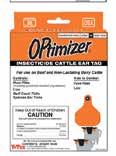

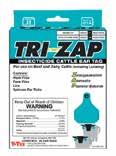

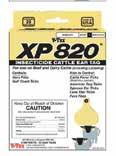

read and follow label directions. All brands shown are trademarks or registered trademarks of Y-TEX® Corporation. © 2020 Y-TEX® Corporation.
NCBA APPLAUDS SENATE VOTE TO BLOCK PARAGUAYAN BEEF IMPORTS
Senate Resolution Protects U.S. Cattle Herd from Foreign Animal Disease
WASHINGTON (March 21, 2024) – Today, the National Cattlemen’s Beef Association (NCBA) thanked the U.S. Senate for passing a resolution to block Paraguayan beef imports. The resolution comes in response to a U.S. Department of Agriculture (USDA) rule that lifted the longstanding ban on Paraguayan beef imports despite the country’s concerning animal health track record.
“Thank you to the strong bipartisan group of senators who voted to overturn the harmful decision to allow Paraguay beef imports into the United States,” said NCBA President and Wyoming rancher Mark Eisele. “Our animal health standards are second to none, and we must be vigilant in protecting the U.S. cattle herd from harmful foreign animal diseases that could have a devastating impact on U.S. agriculture. Paraguay’s history of foot-and-mouth disease is a great concern, and anyone who wishes to trade with the United States must demonstrate they can meet our high standards.”
NCBA has repeatedly raised concerns with Paraguayan beef imports since the proposed rule was issued last year. NCBA specifically called out the outdated animal health data used to reach this decision.
“We are greatly concerned that the U.S. government relied on 9-year-old data and site visits from 2008 and 2014 to justify access for Paraguayan beef imports,” said NCBA Executive Director of Government Affairs Kent Bacus. “We should never rely on old information to make important decisions that could put the health and safety of the U.S. cattle herd at risk. NCBA has maintained from the beginning that USDA should not have proceeded with this rule without current information to accurately assess Paraguay’s ability to meet our strong animal health standards. We are extremely appreciative of the Senate demonstrating strong bipartisan support to block this rule, and we urge the House to advance this legislation as soon as possible.”
Background
The legislation passed by the Senate today is a joint resolution that would block USDA’s rule under the Congressional Review Act (CRA). The CRA is a tool Congress can use to overturn regulations from federal agencies. Legislation under the CRA must be voted on by both the House of Representatives and the Senate and be signed into law by the President. Having passed the Senate, this legislation now goes to the House for further consideration. NCBA urges the House to vote in favor of this legislation and send it to the President’s desk.

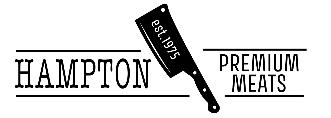


Excellent vacuum packaging and labeling for resale. Smoke house available for any processed animals.
Third party BRC certified.
Halal harvest on Mondays and Thursdays.
PAACO Animal Welfare audited for beef cattle.
Trucking available to pick animals up in Central Kentucky area one day each month to get animals to slaughter. Call for scheduling as we will have to coordinate a load.
Immediate processing dates available.
Wholesale accounts welcome.
(270) 885-8474
18 • Cow Country • May LEGISLATIVE UPDATE
Hampton Premium Meats was founded in 1975.
100% USDA inspected slaughter and processing of Beef, goat, sheep and swine.
(270) 847-0634 Chris (call or text)
Office
orders@hamptonpremiummeats.com



The Sparrow Family Cory 859.338.5826 sparrowcc@hotmail.com Kyle 502.682.7442 kylesparrow1975@gmail.com Kip 859.608.7798 kcspar2@uky.edu Roger 859.333.2707 rsparrow@uky.edu
COMING SOON: Kentucky Livestock Innovation Center
The Kentucky Livestock Innovation Center will soon help producers find answers to challenges in an evolving industry thanks to Kentucky General Assembly appropriations made in this year’s House Bill 1.
The General Assembly gave the Kentucky Cattlemen’s Association $22 million for the construction of the center that will be located at the University of Kentucky’s C. Oran Little Research Center in Woodford County.
“We are so excited to be able to provide this valuable resource to our livestock farmers,” said Dave Maples, executive vice president of the Kentucky Cattlemen’s Association. “We want to thank Rep. Dan Fister, Sen. Amanda Bledsoe and the entire General Assembly for seeing the positive impact that this center can have on producers in this state and the region. I also want to thank our KCA board of directors for their unwavering support over the past five years as we have worked toward this goal.”
The Kentucky Livestock Innovation Center will serve as a coordinating point and valuable educational resource for the livestock industry in Kentucky and the eastern U.S. Some of the center’s major goals include increasing producer marketing opportunities, providing economic resources, and improving the sustainability of the industry.
“The prospects that the Kentucky Livestock Innovation Center bring to the state and animal protein production are almost beyond comprehension for some,” said Jeff Pettit, president of the Kentucky Cattlemen’s Association and Webster County cattle producer. “I can easily see through the work that comes out of this facility that the commonwealth of Kentucky will become known as the go-to location in the eastern U.S. for all matters concerning animal protein production.”

Agriculture remains a critical part of Kentucky’s economy. The 2022 Census of Agriculture showed that Kentucky’s agricultural receipts totaled $8 billion, which was a 40% increase since 2017. Livestock production makes up a large part of those figures. The 2022 Census reported the market value of Kentucky livestock and poultry sold in 2022 was $4.2 billion.
However, livestock producers face numerous challenges including an increased competition for land, an aging farmer population, increased pressure to improve efficiency and finding ways to remain profitable.
“The livestock industry is rapidly changing, and producers are being asked to produce more with less resources,” said Nikki Whitaker, KCA director of operations and policy. “The center will work with producers to develop innovative solutions to these issues.”
The center will also house a Culinary Training Center, which will help increase consumer demand for value-added products and educate employees in food processing, manufacturing, restaurant and retail industries through workforce development opportunities. It will
also allow for consumer preference studies and nutrition education for animal proteins and create a more seamless relationship between producers and consumers.
The idea of the center began five years ago with the completion of a long-range plan by the Kentucky Cattlemen’s Association. Grassroot efforts led by Kentucky livestock producers have been critical in advancing the center’s mission and advocating for its need.
“When I first learned of the Livestock Innovation Center, I knew this project could be transformational for Kentucky agriculture,” said James Coffey, chairman of the center’s steering committee, Kentucky Cattlemen’s Foundation treasurer and Lincoln County cattle producer. “Just as the Ag Development funds were in the early 2000’s, this project is another step forward and gives Kentucky agriculture a platform to be a leader on many fronts. Agriculture producer education, agriculture and food industry workforce training, research knowledge dissemination to end users, and many yet-to-bedetermined goals can be achieved in this facility and through the people that will work in it.”
20 • Cow Country • May



Mike Tansil 615-400-7367 mtansil@mileytansilins.com Mike Graves 859-319-7382 gravesmike13@gmail.com May • Cow Country • 21 2250 West Everly Brothers Blvd. Powderly, KY 42367 www.PogueChevrolet.com • 270-641-0300 www.PogueChrysler.net • 270-641-0400 LIGHT DUTY TRUCKS • HEAVY DUTY TRUCKS • AGRICULTURE REBATES WE’LL TRADE FOR IT, EVEN IF IT EATS!

Bovine Coccidiosis - Frequently Asked Questions
Michelle Arnold DVM (Ruminant Extension Veterinarian, UKVDL)
Coccidiosis, also known as “cocci”, is a disease of calves due primarily to two species of protozoan parasite, Eimeria bovis and Eimeria zurnii. In the clinical or observable form of the disease, calves have diarrhea, often bloody, that can lead to death from damage to the intestinal tract, specifically in the lower small intestine, cecum and colon. “Subclinical” infection without noticeable diarrhea can still cause gut damage resulting in depressed appetite, decreased feed efficiency and poor weight gain. How “sick” animals get depends on which species of Eimeria is involved, the level of exposure and any associated stressors such as weaning, transport, poor nutrition or weather extremes occurring at the time of infection. Coccidiosis can be seen in calves
as early as 3 weeks of age, but it is diagnosed most frequently at stressful times, such as weaning or at entry to a backgrounding operation or feedlot. Cattle generally develop immunity to disease by 1 year of age, meaning they continue to harbor and shed coccidia without the ill effects. Healthy older animals can spread the organism to younger, vulnerable stock. How is the organism transmitted?
All bovine Eimeria have a “fecaloral transmission cycle,” in which the infective form of the organism (the “oocyst”) is passed in the feces of infected cattle and consumed by calves in contaminated feed or water. Coccidia are “host-specific”; the Eimeria species that infect cattle do not infect any other species of animal and vice-versa. Calves infected for the first time shed the greatest number
Unsporulated oocysts are passed through the feces into the environment
Microgametocytes will emerge from the host cell and fertilize a macrogametocyte which will develop into an unsporulated oocyst.
Some merozoites will infect new cells and transform into either macro or microgametocytes.
of the infective “oocysts” and quickly contaminate their environment. The life cycle of Eimeria is completed in a calf within 2-4 weeks and millions of oocysts may be produced in that time. Once the oocysts leave the calf in the feces, the oocysts “sporulate” and are able to survive weeks to months outside in the right conditions of moderate temperature and high moisture. Buildup is most common in areas where animals congregate or are crowded together, especially around watering and feeding facilities. However, direct exposure to sunlight and drying will kill the organism. What does a calf with coccidiosis look like?
After a calf swallows sporulated oocysts, the organism begins a very complex reproductive cycle, both asexual and sexual, within the cells

Sporozoites infect cells of the small intestine and transform into merozoites. Merozoites multiply asexually within the cell causing it to burst. The merozoites will then infect new cells and can repeat this cycle several times
Oocysts become sporulated in the environment
Host ingests sporulated oocysts
Sporocysts containing sporozoites are released in the small intestine
22 • Cow Country • May
Figure 1: From “Coccidiosis in Large and Small Ruminants,” Veterinary Clinics of North America, Food Animal Practice (2018), 34, p. 202.
that line the calf’s intestinal tract (see Figure 1 for a complete review of the life cycle). When the reproductive cycle is finished and the newly formed oocysts are mature, they break open the intestinal cells and are released into the gut and passed in the feces. The damage to the gut caused by this rupture of intestinal cells is what causes the disease symptoms. The most common sign associated with coccidiosis is diarrhea that often contains red blood, mucous and shreds of intestinal lining. Calves often strain and some calves actually can prolapse the rectum with excessive straining. Milder cases may have watery or soft stools, depressed appetite, rough hair coats and poor growth. The disease can range from self-limiting infection in which calves require no treatment, to severe infection and death. Some animals develop nervous signs including tremors, circling and convulsions with normal periods between neurologic episodes. Mortality (death) in those with the nervous form is typically 80-90%. Calves that recover from severe diarrhea may have permanent scarring in the gut and never grow well. Coccidiosis should always be considered a “herd disease” rather than an individual calf problem because Eimeria spread quickly within a group after just a few life cycles of the parasite.
How is the disease diagnosed?
Observation of diarrhea in stressed calves, especially with red blood present, raises the suspicion of coccidiosis. Fecal samples may be collected and analyzed in the laboratory for Eimeria oocysts, with 500 or more oocysts per gram of feces considered important. However, since the organism reproduces by both sexual and asexual means, severe disease can result before oocysts are detected in large numbers in the feces. Therefore, it is recommended to collect fecal samples from multiple animals in a group when attempting to confirm the diagnosis. Of note, there are at least 13 species of Eimeria in cattle and many are considered “nonpathogenic” and will not cause illness, so species differentiation is
required. The rare form of “nervous coccidiosis” is diagnosed most often at necropsy.
Is there a treatment available?
In cattle, once the oocysts are detected in the feces of a calf with bloody diarrhea, a majority of the intestinal damage is already done. However, treatment can still have a beneficial effect and can slow transmission to the rest of the herd. All calves in a group should be treated simultaneously and moved to a cleaner environment or new pasture once the disease is recognized. Amprolium (Corid®) is licensed in cattle for therapeutic treatment when given for 5 days at 10 mg/kg body weight and can be used for prevention at a dose of 5 mg/kg of body weight for 21 days. Amprolium is a “thiamine analogue” and it is taken up by the coccidia in place of thiamine, thus interrupting several critical metabolic steps in its growth and reproduction. Corid® is available as an oral solution, a pelleted feed additive, or as a soluble powder. It is important to observe the correct dose and length of treatment because too much amprolium can result in polioencephalomalacia or “brainer” calves. Talk with your veterinarian for more information.
Sulfaquinoxaline administered as a 0.015% solution in water, is also approved as a treatment in cattle at 10-20 mg/kg body weight for 3-7 days. Sulfa drugs interfere with the synthesis of folic acid, an essential requirement for reproduction in the life cycle of coccidia.
Can coccidiosis be prevented? Prevention is far better than treatment since production losses and permanent gut damage in a proportion of calves is nearly guaranteed once diarrhea is observed. Effective coccidiosis control does not require complete elimination of the organism. Instead, consumption of low numbers of oocysts is beneficial because it promotes development of immunity which will protect the animal when challenged with future infections. Minimizing stress and environmental contamination while optimizing
nutrition will limit the progression of coccidiosis. However, where environmental control is not adequate (for example, a crowded dry lot) and when times of elevated stress are expected such as at weaning, effective drugs are available to help prevent coccidiosis. Two types of drugs, “coccidiostatic” and “coccidiocidal”, are available. Coccidiostats inhibit the development of early life cycle stages and include amprolium (Corid®), decoquinate (Deccox®), and the sulfonamide antibiotic Sulfaquinoxaline. Coccidiocides kill the parasites at several stages of development and include the polyether ionophores known as monensin (Rumensin®) and lasalocid (Bovatec®), and the symmetric triazine class of drugs which are currently unapproved in the USA. The most commonly used drugs to control coccidiosis are the ionophores, specifically lasalocid (Bovatec®) and monensin (Rumensin®), and the quinolone coccidiostat decoquinate (Deccox®). They are highly effective, easily administered in feed or mineral, and should be offered at least 28 days. Lasalocid (Bovatec®) is approved for control of coccidiosis in cattle up to 800 pounds when fed at 0.45 mg/ pound of body weight/head per day up to a maximum of 360 mg per head per day. Monensin (Rumensin®) is approved for prevention and control of coccidiosis in many classes of cattle, either mixed in feed at 0.14-0.42 mg monensin/pound of body weight/ head per day up to a maximum of 200 mg per day or offered in free-choice products at 50-200 mg monensin per head per day. Decoquinate (Deccox®) is approved to be administered at 0.5 mg/kg of body weight per head daily for at least 28 days for prevention of coccidiosis during periods of exposure to coccidia or when cattle are considered at high risk. As mentioned previously, amprolium (Corid®) can be used for prevention at a dose of 5 mg/kg of body weight/head daily for 21 days.
As always, your veterinarian is the best resource for diagnosis of all medical conditions, treatment and prevention recommendations.
May • Cow Country • 23

Pay Attention Now, Reduce Feeding Costs Later
Chris Teutsch UK Research and Education Center, Princeton
Last fall, we analyzed almost 454 hay samples as part of the Eastern Kentucky Hay Contest. A summary of the results can be found in Table 1. Here are some highlights.
• Crude protein (6.1 to 21.9%) and total digestible nutrients (45.7 to 66.3%) varied widely
• 2% of the hay samples contained less than 50% TDN
• 1% of the hay samples contained less than 8% crude protein
• 184 samples or 41% contained enough energy to meet the requirements of a beef cow at peak lactation
• 300 samples or 66% would meet the protein requirements of a beef cow at peak lactation
• 450 samples or 98% contained enough protein and energy to meet the needs of a dry pregnant cow
In general, the hay samples from 2023 were better than 2022! So, I am starting to feel a little better about myself as a forage extension specialist. However, it was probably more due to weather than me. I guess the biggest take home from the 2023 samples is that we still have a way to go in terms of improving hay quality! More than 60% of the samples still needed energy supplementation when feeding hay to lactating brood cows and first calf heifers.
So, what don’t these results tell us? Since there is still wide variation in both crude protein and energy for the hay samples in this dataset, the average or median of the results CANNOT be used to make recommendations on what or how much to supplement. To make this type of recommendation, you will need to sample individual hay lots (one cutting from one field) that you will be feeding (see AGR-257 Hay Sampling Strategies for Getting a Good Sample). Once you have the results in hand, then a supplementation strategy can be designed by either working with your local extension agent, nutritionist or veterinarian or by using the UK Beef Cow Forage Supplementation Tool.
UK Beef Cow Forage Supplementation Tool: An Example
For this example, we will use the “average” crude protein (CP), neutral detergent fiber (NDF), and total digestible nutrients (TDN) for the 268 hay samples that require supplementation and assume an as fed dry matter of 88%. The averages for this sample set were 11.8%, 56% and 57% for CP, NDF and TDN, respectively. When we compare these average values to the nutrient requirements of a lactating brood cow (Table 2), it becomes apparent that this hay will require energy supplementation. The question then becomes what type of supplement and how much? This can be
determined by using the UK Beef Cow Forage Supplement Tool. This application can be used online or downloaded to your smart phone. It allows you to enter the results from your forage test (dry matter, neutral detergent fiber, crude protein and total digestible nutrients) and gives you a range of supplement options and how much of each supplement must be fed to meet the cow’s nutritional requirements at a given stage of production (Figure 1). The UK Beef Cow Forage Supplement Tool can be found online at http://foragesupplement-tool.ca.uky.edu/.
When we enter the average values for crude protein, neutral detergent fiber, and total digestible nutrients for the sample set requiring supplementation, the application indicates that this hay would need to be supplemented with either 2.1 lbs. corn, 2.1 lbs. of soybean hulls, 2.1 lbs. of corn gluten feed, or 2 lbs. of distiller’s dried grain with solubles on a daily basis (Figure 2). When selecting a supplemental feed, it is important to consider local availability, available storage, feeding method, amount fed, and of course its cost (Table 3).
The cost of supplementing hay based on the 2023 hay contest results for a 150day hay feeding period (late November to late March) ranged between $29 and $81/cow with average supplementation cost of $46.26/cow. A livestock producer with 100 brood cows would spend approximately $4,000 to $5,000 on
24 • Cow Country • May
CONSTITUENT MIN MAX AVG MED STD CONSTITUENT DESCRIPTION Crude Protein (%) 6.1 21.9 12.3 11.9 2.7 Estimate of protein calculated by Total N x 6.25. Acid Detergent Fiber (%) 30.1 49.8 38.5 38.1 3.0 Chemical estimate of forage digestibility. Used to calculate energy. Neutral Detergent Fiber (%) 40.1 75.9 58.5 58.8 5.6 Chemical estimate of indigestible and slowly digestible fiber. Used to estimate DM intake. Ash (%) 3.6 15.5 8.0 8.0 1.5 Measure of total mineral content. Used as an indicator of soil contamination. IVTDMD-48 Hr (%) 56.4 82.1 71.6 72.2 4.2 Amount of forage material digested after 30-hours in ruminal fluid. Total Digestible Nutrients (%)-based on ADF 44.6 66.7 57.3 57.7 3.3 Estimate of energy. Calculated using ADF. Used to balance rations. Total Digestible Nutrients (%)-based on fiber digestibility 45.7 66.3 58.8 59.3 3.4 Estimate of energy. Calculated using SUMMATIVE equation. Based on actual fiber digestibility. Relative Forage Quality (%) 59 168 120 122 18 Relative comparison of forage quality to alfalfa harvested at full bloom. RFQ is a better ranking for grass than RFV. Dry Matter intake (% of Body Weight) 1.6 3.1 2.5 2.5 0.3 Estimate of how much of given forage can be consumed. Based on ACTUAL fiber digestibility.
Table 1: Summary of 2023 East Kentucky Hay Contest forage quality results. Samples were collected by extension agents, dried in a forced air oven, ground to pass through a 1 mm screen and predicted using a near infrared spectroscopy

Figure 1: Steps for utilizing UK
http://forage-supplement-tool.ca.uky.edu/. 1. Obtain a representative forage sample and send to NFTA certified lab. From the test results enter DM, CP, NDF, and TDN (all on a DM basis) into the supplementation tool. 2. Select the stage of production from the drop down menu. 3. Select the supplements that you have available or just click the “Select All” button. 4. Click on the “Calculate” button. View the results and select the appropriate supplement.
Note: This NOT ration balancing software. Consult your local extension office or a trained nutritionist for help with formulating complete rations.

labor and equipment costs
supplementation. If only there was a way to reduce this cost!
It is important to realize that both hay testing and the UK Beef Cow Forage Supplement Tool are NOT perfect and that the results are based on a
1,250-pound brood cow. As cow weight increases, so will supplementation rates. These tools are designed to get you in the ballpark and let you know if there is going to be a real problem with the hay that you are feeding. The true test is how
SUPPLEMENT COST RATE DAILY 120-DAY 150-DAY $/ton lb/day $/day/cow $/120 days/ cow $/150/days/ cow Corn (6 lbs./day max) 185 2.1 0.19 23.31 29.14 Soyhull (16 lbs./day max) 279 2.1 0.29 35.10 43.88 Corn Gluten (8 lbs./day max) 282 2.1 0.30 35.48 44.35 DDGS (8 lbs./day max) 251 2 0.25 30.08 37.61 Soybean Meal (4 lbs./day max) 468 2.3 0.54 64.57 80.71 Commodity Mix (14% CP) 266 2.1 0.28 33.52 41.90 Average Cost 0.31 37.01 46.26 May • Cow Country • 25 ANIMAL CLASS TOTAL DIGESTIBLE NUTRIENTS (%) CRUDE PROTEIN (%) Growing steer @ 1.5 lb/day 65 12 Growing steer @ 1.7 lb/day 68 11 Lactating beef cow 60 11 Dry beef cow 50 8 Lamb finishing 70 12 Lactating ewe 65 13 Dry ewe 55 9
Adapted from Southern Forages, Fifth Edition.
Table 2: Nutritional requirement of various livestock classes
Beef Cow Forage Supplement Tool found at
1 2 3 4
Figure 2: Results from the UK Beef Cow Forage Supplement Tool for the “average” of the 268 hay samples that required supplementation from the 2023 Eastern Kentucky Hay Contest.
Table 3: Supplementation costs for various commodities and hay feeding periods. These costs do NOT include storage,
CONTINUED ON
PAGE 26
CONTINUED FROM PAGE 25
your cows perform on a given hay lot. Observing body condition is an important for evaluating hay quality. Sometimes when you look at your cows, it is hard to see loss of condition from day to day. It may be a good idea to take some good quality photos at several times during the hay feeding season to document and compare changes in body condition.
Lastly, it is always a good idea to run your forage testing results by your local extension agent, veterinarian or nutritionist. When it comes to hay feeding, it is important to be proactive rather than reactive. It is always easier to maintain condition rather than try to put it back on. So, make sure to test your hay and supplement accordingly before your cows lose condition and come up open.
Improving Hay Quality
If you find the quality of your hay is below “average” and/or you are tired of buying and feeding supplements, then it may be a good time to think about steps that you can take this spring to improve your hay quality and reduce your winter-feeding costs. Below is a list of things that you can implement to improve hay quality.
• Fertilize and lime according to soil test. A balanced fertility program is essential for optimizing hay yield and quality. Apply phosphorus, potassium and lime according to soil test results. Avoid using “complete” fertilizers such as 10-10-10. These fertilizers commonly over apply phosphorus and under apply potash.
• Apply nitrogen early to promote rapid spring growth. Applying 80 lbs. N/A in mid- to late March will promote early growth in hay meadows, resulting in higher first harvest yields with improved crude protein values.
• Harvest at the boot stage. The single most important factor impacting forage quality is stage of maturity at harvest. Hayfields should be mowed as soon as the grass reaches the late boot-stage. The boot stage occurs when the sheath of the flag leaf swells just prior to the emergence of the seed head. By making the first cutting in a timely manner, we will have time to make a leafy second cutting just prior to the summer months.
• Mow early in the day. Some studies have shown that sugars tend to be the highest in late afternoon,
FEATURED VIDEO
Mowing and conditioning for bale silage: equipment and harvest management by Jessica Williams. This presentation was given as part of the 2022 Alfalfa and Stored Forage Conference, Conserving High Quality Forage as Baleage, that was held in Bowling Green on Feb. 24, 2022. This conference was joint effort of the Kentucky Forage and Grassland Council and University of Kentucky Cooperative Extension. It is available on the KYForages YouTube Channel, https:// www.youtube.com/c/KYForages.
FEATURED PUBLICATION
This month’s featured publication is: “Understanding Forage Quality” by Don Ball, Mike Collins, Garry Lacefield, Neal Martin, David Mertens, Ken Olson, Dan Putnam, Dan Undersander, and Mike Wolf. You can access it at https://tinyurl.com/57mvz8sh or visiting your local extension office.
FENCING TIP
Properly build fence brace assemblies. Regardless of the type of fence that you are putting up, the brace assembly is the heart of the fencing system. The most recommended brace assembly for our region is the H-brace. The brace post and corner post should be a CCA-treated post that is 6-8 inches in diameter and 8 feet in length and should be driven small end down. The brace rail should be a CCA-treated post that is 5 inches in diameter and 10 feet in length. The brace rail should be pinned with 0.5-inch Class III Galvanized pins that are 4 and 10 inches in length. The brace wire should be two wraps of a 170,000 psi Class III Galvanized high tensile wire that is tightened with a heavy duty in-line ratcheting strainer. After tensioning, the brace wires should be pulled together by loosely wrapping piece of high tensile wire on each side of the strainer and pushing the wraps toward the post. To learn how to properly build a brace, make plans to attend the Kentucky Fencing Schools that will be held in October.
FORAGE MANAGEMENT TIPS

• Seed warm-season annual grasses once soil temperature reaches 60 F.
• Clip, graze or make hay to prevent seedhead formation in cool season pastures.
• Rotate cool-season pastures when residual is 3-4 inches.
• Consider temporary electric fencing to subdivide larger pastures and exclude areas for mechanical harvesting.
• Scout pastures for summer annual weeds and control when small.
• Make plans to attend summer forage tours and fencing schools in the fall.
making this the optimal time of day to cut. However, in high rainfall environments like Kentucky, maximizing curing time is the highest priority. Therefore, hay should be mowed in mid to late morning after the dew has dried.
• Use mower-conditioner. Conditioning the stems allows moisture to escape at a faster rate. This shortens curing time and improves your chances of avoiding rain. Conditioning is especially important for first cutting grasses, summer annual grasses and legumes, all of which tend to have larger stems.
• Set swath on mower-conditioner to the widest possible setting. Maximizing the swath width decreases curing or wilting time by exposing a larger portion of the forage to direct sunlight.
• Rake or ted at 40-50% moisture content. Raking and tedding the forage while it is still pliable helps to reduce leaf loss and maintain forage quality. Once the moisture content is below 40%, leaf loss increases, especially in legumes such as alfalfa and clover.
• Bale at 18-20% moisture to inhibit mold growth and reduce heating. Avoid baling hay that is excessively dry due to high levels of leaf loss and hay that is above 20% moisture due to heating and potential hay fires.
• Store dry hay under cover and off the ground. Protecting hay from the weather helps to reduce dry matter losses and maintain forage quality. Much of the weathering damage is a result of the hay bale wicking moisture up from the ground. So, storing hay off the ground can greatly reduce deterioration.
26 • Cow Country • May
• Consider using baleage. The biggest advantage of baleage is the shortened period between mowing and baling. In many cases, hay can be mowed one day and baled the next. This facilitates harvesting hay at the correct stage of growth, which is the No. 1 factor impacting forage quality. To learn more about baleage see AGR-235 Baleage: Frequently Asked Questions.

Beefing Up Social Media
Katie Pratt Kentucky Cattlemen's Association
Across Kentucky, beef producers are using social media to promote beef, their businesses and the benefits of agriculture. Here are examples of how four Kentucky producers are making social media work for them. Bringing the farm to consumers
Amanda Hall, a Georgetown beef producer, began selling beef direct to consumers using social media several years ago.
“If you don’t tell your story, somebody else is going to do it for you,” Hall said. “We have been able to use social media to share our story and increase our sales. People are intrigued by where their food comes from, our products and us.”
As her business and family grew, she used social media to help rebrand her business, with the goal of making them both more relatable to families.
esch 5612 no till drill
LARGER SEED HOPPERS • CLEAN VIEW
SIGHT GAUGE • CLEAR VIEW SEED
MONITOR WINDOW • 12 FT DRILL • NEW TECHNOLOGY HIGH SPEED DRILL 8MPH! • SWING TONGUE FOR 8”10”
TRANSPORT • WILL PLANT BIN RUN SEED! • FINANCE OPTIONS AVAILABLE!

“We changed the name of our business and rebranded right after our daughter Charli was born,” she said. “I really wanted to show a working family farm and beef production through the eyes of my children. I also wanted to increase the general public’s understanding of agriculture and show them that it doesn’t have to be complicated.”
Hall regularly posts on her Hallstead Farm and Meats Facebook and Instagram accounts about her family’s daily farming activities, which in addition to Charli and her husband Reid now include her son Owen. Some of Hall’s posts have garnered millions of views.
“One of our most viewed posts was actually Reid cutting up a roast,” she said. “With that particular post, I wanted to show that beef is healthy, and it’s easy enough for a busy mom with two kids to prepare for a weeknight dinner.”
Hall also hosts interactive opportunities with her customers through social media. She offers incentives such as a free pound of ground beef if they can correctly answer questions about beef and agriculture.
While the majority of their beef is sold to consumers in Louisville, Lexington and Georgetown, Hall does have social media followers from all over the United States.
“I think there’s more good than bad that comes from sharing your story on social media,” she said. “It’s been fun sharing our story, and I hope
CONTINUED ON PAGE 28

May • Cow Country • 27
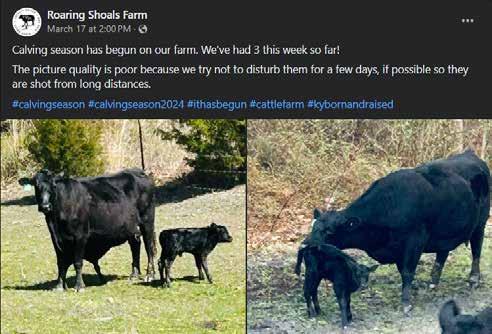
CONTINUED FROM PAGE 27
to use it as a way to look back and see how our business and kids have grown.”
Hall was recently accepted as a member of the NCBA’s Trailblazer Program. This national program gives producers tools and resources to become national agriculture advocates. In the yearlong program, they learn how to better share the message of their operation, the beef industry and agriculture in general.
Making connections
For Owensboro producer Daniel Hayden, sharing on social media was a great way for him to connect with the general public and educate them about where their food comes from. He started sharing his daily activities for his cattle and poultry operations on social media in the early 2010’s, and by 2014, he had garnered many followers on Snapchat. This led him to many opportunities to talk to large groups of farmers about why and how to share their businesses on social media.
“Advocacy has always been a passion of mine ever since I was in 4-H and FFA,” he said. “Nearly 98% of the population has no idea what farmers have to do to get food on their tables, and they are really interested in learning about things that we would consider simple daily tasks.”
While it was initially very awkward
for him to talk to his phone, Hayden said his wife Danielle encouraged him to use his voice and his personality to make his social media content stand out from others. As a result, many of his posts offer a side of humor along with a glimpse into his daily life. He encourages other farmers to make their social media accounts a reflection of themselves.
“Use your own words and your own personality,” he said. “People will follow and respond more favorably to you when you are genuine. You will be surprised by the impact you have on your local community.”
While a growing family has caused Hayden to slow down on using social
media these days, he still does post some. He says his favorite social media outlets right now are the Instagram and Facebook stories because of their ease of use, more natural feel and the responses he gets.
“To me the biggest thing is getting to engage with your audience,” he said. “The interaction is where things really happen, and people begin to learn that we really do care about our animals and land and try to be the best stewards we can be.”
Answering a demand
Joe Lowe of Oak Hollow Angus in Smith’s Grove started using Instagram to promote his beef in 2019. As with many producers selling local beef prior to and during COVID, Lowe quickly realized how much consumers valued locally grown beef and the demand for his products grew, especially as meat supplies tightened. He and his wife Cassie began offering delivery to their customers from Louisville to Bowling Green.
“When we started, social media was the easiest and cheapest way for us to market our product to people who already knew us and were interested in purchasing,” he said. “Some of our customers have even helped us sell more beef by tagging us in posts.” The demand for his product continues. Lowe posts on Lowes Angus Beef’s Instagram page when he has available inventory. He also
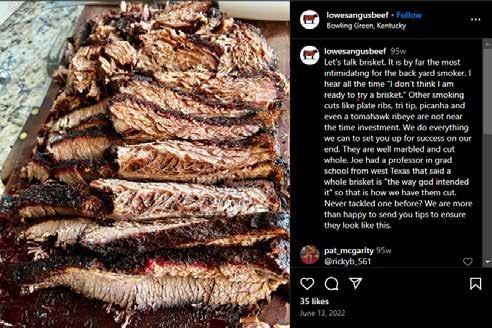
28 • Cow Country • May

shares family updates, dinner ideas and videos and photos of his cattle and farm.
“In advocacy training, they teach us that you really have a story to tell,” he said. “Having grown up with social media, it’s been so easy to use it to share our story and sell our beef.”
He said demand for Lowes Angus Beef continues as people’s curiosity about cattle continues to increase.
“Thanks to the popularity of TV shows like ‘Yellowstone,’ people are really interested in learning more about how cattle are raised,” he said. “It’s a great opportunity for us to humanize the story of beef production.”
Like Hall, Lowe is a recent participant in NCBA’s trailblazer program. The program taught him how to use various communication methods to fine tune his business’s message and share the positive message of the beef industry as a whole to new audiences. When he’s not posting about his available inventory, he posts Instagram Reels explaining important beef topics including the benefits of consuming both store-bought and local meat and how people can stretch their food dollars by offering ideas for more affordable cuts of beef.
Selling a lifestyle and dinner
Erik and Amy Holbrook of Roaring Shoals Farm in Breathitt County began using social media during 2020 when they decided to directly market their beef to consumers. Before
that they sold their cattle through their local stockyards. They now completely sell direct-to-consumer through their website and local farmers markets.
“People want to know our story, and they want know how we handle the cattle,” Amy Holbrook said. “They want to know that we were good to them and treated them well. Social media helps us share that story.”
Amy Holbrook, who also works in IT, handles the family farm’s social media accounts, which include Facebook, Instagram and TikTok. She shares photos and videos of her family doing every day farming activities, recipes and how she renders beef fat into tallow. Tallow has many uses, but she primarily uses it to make candles.
“TikTok is my favorite because it’s so easy,” she said. “With my IT background, I do have the skills to do video editing, but I don’t necessarily have the time. TikTok makes it easy to shoot and upload videos of what we are doing at the farm.”
Holbrook tries to post at least a few times per week. Her Instagram also feeds directly onto their website so customers without social media can still see the information. She also offers private recipe pages for subscribers of their beef bundles, which have some less common cuts of beef.
“I’m selling beef, but I’m also trying to sell a family dinner,” Holbrook said. “We want to help people try these cuts of beef that they don’t always see in the grocery store. But if a customer takes home a cut of beef and doesn’t know how to use it, they are not going to buy it again. I try to use social media to share how we prepare and enjoy these cuts of beef in our home. ”
Holbrook encourages producers to think about having some type of online presence.
“It’s important for producers to have an online presence, even if it is something you are not comfortable with,” she said. “People have to be able to find you, even if it’s just sharing your phone number, farm address and some farm pictures.”
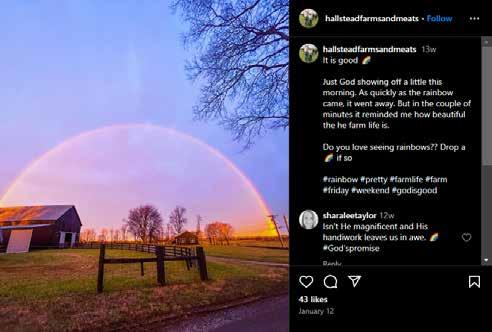
May • Cow Country • 29
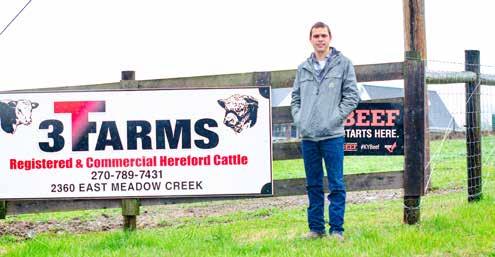
"I'm a member because of the advocacy the association does for me."
Isaac Thompson Taylor County Cattlemen's Association
30 • Cow Country • May DIVISION 3 (UP TO 75 MEMBERS) 2024 2023 Diff Russell 73 65 8 Out of State 69 66 3 Campbell 64 74 -10 Woodford 61 64 -3 Grant 55 74 -19 Rockcastle 54 66 -12 Calloway 53 55 -2 Taylor 52 59 -7 Oldham 52 61 -9 Estill 51 53 -2 Mason 51 70 -19 Todd 53 58 -5 Montgomery 47 54 -7 Whitley 45 49 -4 Wayne 42 41 1 Simpson 42 41 1 Ohio 41 50 -9 McCreary 41 38 3 Carroll 37 45 -8 Highlands 35 38 -3 Hancock 34 36 -2 Union 34 63 -29 Nicholas 31 43 -12 Butler 28 35 -7 McLean 25 22 3 Clay 23 29 -6 Crittenden 23 26 -3 Hopkins 22 23 -1 Livingston 20 17 3 Knox 20 30 -10 Bullitt 20 30 -10 Menifee 15 21 -6 Henderson 11 9 2 Gallatin 7 8 -1 Magoffin 6 6 0 Powell 5 7 -2 Pike 5 5 0 Eastern Foothills 5 7 -2 Harlan 0 1 -1 Bell 0 0 0 If you need anything for membership, please contact Rachel Cain at (859) 278-0899 or rcain@kycattle.org 2024 2023 Difference Totals as of: April 15, 2024 9,871 11,114 -1,243 MEMBERSHIP DIVISION 1 (151+ MEMBERS) 2024 203 Diff Barren 381 482 -101 Shelby 343 378 -35 Marion 325 301 24 Adair 310 326 -16 Christian 283 333 -50 Breckinridge 279 269 10 Bath 279 348 -69 Madison 262 307 -45 Lincoln 252 227 25 Hart 223 244 -21 Washington 220 221 -1 Grayson 213 237 -24 Logan 204 206 -2 Henry 191 192 -1 Edmonson 176 204 -28 Franklin 174 167 7 Larue 169 157 12 Mercer 167 192 -25 Meade 163 167 -4 Metcalfe 156 151 5 Northern Kentucky 154 168 -14 Bracken 151 188 -37 Jessamine 149 218 -69 Casey 147 172 -25 Hardin 146 160 -14 Green 144 160 -16 Harrison 135 153 -18 Clark 134 185 -51 Laurel 133 151 -18 Warren 133 159 -26 DIVISION 2 (76-150 MEMBERS) 2024 2023 Diff Fleming 121 127 -6 Scott 115 121 -6 Monroe 113 128 -15 Garrard 113 109 4 Daviess 108 121 -13 Pulaski 107 146 -39 Trigg 106 104 2 Northeast Area 102 103 -1 Caldwell/Lyon 101 119 -18 Anderson 96 109 -13 Boyle 84 101 -17 Mountain 83 97 -14 Webster 81 79 2 Jackson 81 118 -37 Lewis 79 78 1 Trimble 78 110 -32 Owen 78 90 -12 Pendleton 78 90 -12 Robertson 76 77 -1 Purchase Area 74 83 -9 Muhlenberg 67 78 -11 Fayette 66 83 -17 Louisville Area 64 75 -11 Bourbon 64 97 -33 Clinton-Cumberland 58 63 -5 Nelson 54 76 -22 Allen 41 112 -71 Twin Lakes 35 58 -23
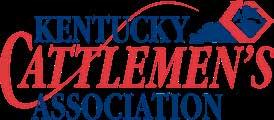
2023-24 MEMBERSHIP APPLICATION
* MEMBERSHIP YEAR 10/1/23– 9/30/24 NAME SPOUSE NAME
*Payments of KCA membership dues are tax deductible for most members as an ordinary and necessary business expense. However, charitable contributions of gifts to KCA are not tax deductible for Federal Income Tax purposes. Due to new IRS regulations, $2.24 of your dues would not be deductible. Approximately $12 of your dues will go towards the monthly publication Cow Country.
PLEASE CHECK THE MEMBERSHIP(S) YOU WOULD LIKE TO JOIN:
KCA MEMBERSHIP ($30/YR) NEW RENEWAL
Membership dues are $30 unless otherwise listed below
KCA COUPLE MEMBERSHIP
To add your spouse, please add $15 to your KCA Membership KENTUCKY JUNIOR CATTLEMEN’S ASSOCIATION ($10/YR) NEW RENEWAL
I WOULD LIKE ADDITIONAL INFORMATION ON THE YOUNG PRODUCER’S COUNCIL
TOTAL MEMBERSHIP:
$ KCA
$ KJCA
TOTAL CONTRIBUTIONS:
$ CATTLEMEN’S FOUNDATION DONATION (voluntary)
TOTAL AMOUNT ENCLOSED:
$ ALL DONATIONS TO KCF ARE TAX DEDUCTIBLE
COUNTY DUES
Dues are $30 except for the counties listed below.
Allen...............................$40
Anderson........................$25
Bourbon.........................$20
Boyle ..............................$35
Bullitt..............................$20
Butler..............................$25
Franklin ..........................$25
Highlands .......................$20
(Boyd, Floyd, Johnson, Lawrence, & Martin)
Hopkins ..........................$35
Laurel.............................$35
Louisville Area ................$20
(Jefferson, & Spencer)
Magoffin .........................$20
Menifee ..........................$25
Mountain........................$25
(Breathitt, Knott, Lee, Leslie, Letcher, Morgan, Owsley, Perry & Wolfe)
Oldham ..........................$35
Taylor..............................$20
Twin Lakes ......................$20
Warren ...........................$40
Wayne ............................$25
Whitley ...........................$25
Woodford......................$25
May • Cow Country • 31
CITY COUNTY STATE ZIP RECRUITED
PHONE
FARM NAME ADDRESS
BY
FAX EMAIL
1-100 # HEAD DUES $160 101-250 $320 251-500 $480 501-750 $693 751-1000 $960 1,001-1,250 $1,227 1,251-1,500 $1,493 1,501-1,750 $1,760 1,751-2,000 $2,027 > 2,000 $2,027 + $0.4053/HD # HEAD DUES Complete and return to: Kentucky Cattlemen’s Association 176 Pasadena Drive • Suite 4 • Lexington, KY 40503 Join online at www.kycattle.org or call (859) 278-0899
IF YOU WOULD ALSO LIKE TO JOIN THE NATIONAL CATTLEMEN’S BEEF ASSOCIATION The NCBA is now a State Marketing Partner with the KCA. You can pay your dues to both organizations with one check, at the same time.
 Kelly Baird Director of Communications and Events
Kelly Baird Director of Communications and Events
In March, I spent a lot of time speaking with fans of various high school basketball teams at the Kentucky High School Athletic Association (KHSAA) girls' and boys' state tournaments. There were fans representing 32 different schools from counties all across the state. With such a diverse crowd, I was able to have conversations with consumers who traditionally we don’t have the opportunity to directly communicate with. These conversations, usually initiated with a quick “Who are you cheering on?” led to deeper conversations as far as “Where can I buy beef?” to “Can we discuss the nutritional value of beef?” all the way to “How do you expect me to support the cattle industry?” Loaded questions from concerned consumers. It’s interesting to hear concerns from individuals who do not have direct ties to cattle. Concerns that we may
traditionally sweep to the side, not because they aren’t addressed or valued as issues, but because as cattle producers, different issues rise to the forefront of our minds.
The biggest issues in agriculture look drastically different for producers and consumers. Producers may fear the loss of productive land, cattle prices, weather, animal health and more. While consumers focus on animal welfare, sustainability, buying beef on a budget, the nutritional value of their food and more. All concepts are rooted in a similar fear and care for the industry but approach the narrative very differently.
The story of the Kentucky beef industry isn’t difficult to understand. Producers care about their cattle and want to continue to ensure safe beef makes it to consumer tables. But is the messaging out there? This
May, celebrating Beef Month, our goal is to bridge the knowledge gap between the producer and consumer. With the theme of “Our Beef, Your Wellness,” our messaging centers around showcasing the message of the Kentucky beef producer, while addressing concerns heard each day from the consumers shopping to feed their families. Then continue the messaging into the future.
We will be showcasing four recipes: two prepared with ground beef, two prepared with a lean steak to show ways to buy beef on a budget, while nutritionally fueling your day. We will be attending Beef Month events in your communities to firsthand answer questions and talk to consumers about where their food comes from. Look out for videos released on social media highlighting Kentucky farming families.


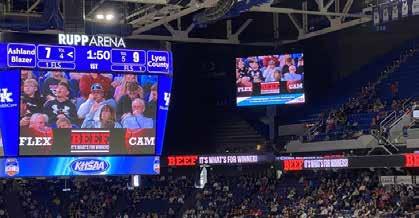

From March 13-16 and March 20-23, the Kentucky Beef Council was set up at Rupp Arena cheering on KHSAA athletes playing in the girl’s and boys’ basketball state tournaments. Beef is the preferred protein of KHSAA. As a sponsor, we were able to have in-game and out-of-game promotions. Our gameday setup included an informational table, “Beef. It’s What’s for Dinner” Flex Cam on the jumbotron, “Packed with Protein” banners on each end of the student section, LED ribbon board signage, LED courtside signage, and radio spots. Thus far, we have had a great response to our presence at high school athletic events and hope that we can continue growing our relationship, possibly in sports nutrition going forward. At our informational table outside the arena, we were able to discuss nutrition information, beef trivia and other educational facts about beef and beef production.

BEEF MONTH DATES
If you have a beef month event in your county, contact kbaird@kycattle.org with more information. Happy Beef Month, and thank you for feeding Kentucky.
May • Cow Country • 33
Month Proclamation
with Governor Andy Beshear
Burger
Kroger
Month Proclamation Signing with Agriculture
Mills Beef Day
County Cattlemen’s
Louisville Bats Beef Night at the Ballpark Shelby County Beef Day Madison County Beef Day MAY 1 MAY 2-3 MAY 6 MAY 9 MAY 10 MAY 11 MAY 13 MAY 22
Beef
Signing
Derby
Sampling
Middletown Beef
Commissioner Jonathan Shell Hinton
Simpson
Event
2024 derby burger challengeTM winner stacy hoehle’s DERBY
PLT BURGEr
Stacy Hoehle of La Grange won the 12th annual Derby Burger Challenge with the “Derby P.L.T. Burger.” Hoehle says this winning recipe is “a love letter to the Kentucky Derby Festival.” Hoehle, a longtime lover of the derby and a Kentucky native, found her inspiration for ingredients she enjoys separately. These ingredients remind her of summer and bring her back to her southern roots. This winning burger is stacked with pimento cheese, a fried green tomato, remoulade, lettuce, red onions, and served on a warmed brioche bun.
Forty-one recipes were submitted for the competition and over 20,000 people voted online to choose the top four finalists. A panel of judges selected Hoehle as the winner after a final live cook-off at Kroger. The entries were judged on taste, appearance, ease of preparation and creativity.
Grant Ruble was runner-up with the “Candy Dan” packed with candied

bacon, BBQ sauce, and fried onions. Brian Capps, two-time reigning champion, took home third place with the “Pesto Provolone Burger.” Ira Mowman took home fourth place this year with the “Jamaican Jerk Burger,” topped with his homemade pineapple salsa. All three gentlemen hail from Louisville.
The “Derby P.L.T. Burger” will be served at Fest-a-Ville at Waterfront from April 25 to May 3, BourbonVille, Taste of Derby Festival, and inside Louisville Kroger stores through the end of April leading up to the Derby.
Hoehle walked away with a 2024 Derby Festival poster, VIP tickets to Thunder Over Louisville, tickets to BourbonVille, a $100 gift certificate to Kroger, a grilling prize pack and grill from the Kentucky Beef Council, and a year’s supply of Dan-O’s seasoning.
More information about the Derby Burger Challenge and past winners can be found at kdf.org/beef and kybeef.com/derby-challenge.

2024 derby burger challengeTM winner stacy hoehle’s
DERBY PLT BURGEr
INGREDIENTS: 1 pound Kentucky Cattlemen’s Ground Beef • 1 tablespoon Dan-O’s Spicy Seasoning • 4 brioche buns • 4 Butter Lettuce leaves • 4 fried green tomato slices to desired thickness • 4 tablespoons St Elmo’s remoulade • 3 ounces Pimento Cheese • 1/4 red onion, thinly sliced • salt
COOKING: Combine ground beef and 1 tablespoon of Dan O’s Spicy Seasoning. Form four tightly packed burger patties and season to taste with salt.
Grill or pan fry burgers to desired doneness.
Warm buns
Dress bottom bun with one leaf of lettuce, red onion slices, and 1 tablespoon remoulade.
Top with burger patty, the fried green tomato, about a rounded tablespoon of pimento cheese, and top bun.

34 • Cow Country • May

GRILLED STEAK AND WATERMELON SALAD
INGREDIENTS: 4 beef Tenderloin Steaks, cut 1 inch thick (about 4 to 5 ounces each)
• 1 teaspoon ground coriander
• 1 teaspoon ground cumin
• 2 slices seedless baby watermelon, 1 inch thick (about 1 pound each)
• Salt and pepper
• 8 cups baby arugula or spinach leaves
• 1/4 cup reduced-fat balsamic or Italian dressing
• 1 cup halved cherry tomatoes
• 1/2 cup thinly sliced red onion
• 1/4 cup crumbled reduced-fat feta cheese
COOKING: Combine coriander and cumin; press evenly onto beef steaks.
Place steaks in center of grid over medium, ash-covered coals; arrange watermelon slices around steak. Grill steaks, covered, 10 to 14 minutes (over medium heat on preheated gas grill, 11 to 15 minutes) for medium rare (145°F) to medium (160°F) doneness, turning occasionally. Grill watermelon 2 to 4 minutes or until grill marks form, turning once.
Carve steaks into slices. Cut each watermelon slice into 6 wedges. Season beef and watermelon with salt and pepper, as desired. Combine arugula and dressing in large bowl; toss to coat. Divide arugula among four serving plates. Arrange beef and watermelon on salad; top evenly with tomatoes, onion and cheese.

tiny taco beef tarts
INGREDIENTS: 12 ounces Ground Beef (93% lean or leaner) • 1/2 cup chopped onion • 1 teaspoon minced garlic • 1/2 cup prepared mild or medium taco sauce • 1/2 teaspoon ground cumin • 1/4 teaspoon salt • 1/8 teaspoon pepper • 2 packages (2.1 ounces each) frozen mini phyllo shells (30 shells total) • 1/2 cup shredded reduced fat Mexican cheese blend
TOPPINGS: Shredded lettuce • sliced grape or cherry tomatoes • guacamole • lowfat dairy sour cream • sliced ripe olives (optional)
COOKING: Heat oven to 350°F. Heat large nonstick skillet over medium heat until hot. Add Ground Beef, onion and garlic in large nonstick skillet over medium heat 8 to 10 minutes, breaking up beef into small crumbles and stirring occasionally. Add taco sauce, cumin, salt and pepper; cook and stir 1 to 2 minutes or until mixture is heated through.
Cook’s Tip: Cooking times are for fresh or thoroughly thawed Ground Beef. Ground beef should be cooked to an internal temperature of 160ºF. Color is not a reliable indicator of ground beef doneness.
Place phyllo shells on rimmed baking sheet. Spoon beef mixture evenly into shells. Top evenly with cheese. Bake 9 to 10 minutes or until shells are crisp and cheese is melted.
Top tarts with lettuce, tomatoes, guacamole, sour cream, and olives, as desired.
Cook’s Tip: Try out Tiny Greek Beef Tarts for another variation.
May • Cow Country • 35
WHO IS RESPONSIBLE FOR REMITTING THE CHECKOFF ASSESSMENT?
BUYER
Generally the Buyer is responsible for collecting the Beef Checkoff assessment from the Seller SELLER
However, both the Buyer and the Seller are responsible for seeing that the Checkoff is collected and paid. or pays $2 to
QUALIFIED STATE BEEF COUNCIL 50¢

$1.50
Cattlemen’s Beef Board invests in national Checkoff programs, while Kentucky Beef Council invests in state programs.
If you are a producer from one of these seven states - Alaska, Connecticut, Maine, Maryland, Massachusetts, New Hampshire, and Rhode Island - you will remit directly to the Cattlemen’s Beef Board. If you have any questions regarding who is responsible for remitting the Checkoff assessment or how to remit payment, please contact your State Beef Council or the Cattlemen’s Beef Board at (303) 867-6304.
3 Exceptions to Beef Checkoff Collection:
1. Non-producer status: If a person (or company) owns cattle for 10 days or less, purchases the cattle to facilitate the transfer of ownership to a third party, and certifies that any Checkoff dollars due from the previous owner have been collected, then that person qualifies as a “Non-Producer” and the Checkoff assessment is not due when qualified cattle are resold.
2. Organic Exemption: In the 2002 Farm Bill, Congress created a process exemptiing organic producers from paying Checkoff program assessments.
3. Pre-Payment: Producers can also choose to “prepay” the Checkoff assessment when shipping cattle out of state for feeding and still retain ownership on the cattle. This allows the producer to direct half of the $1-per-head national Checkoff assessment to the beef council in the state where the cattle were raised, rather than the state where the cattle will be fed. Note: To claim any of these exemptions, the person selling the cattle must provide the proper ‘document’ to show that the Checkoff assessment is not due at the time of sale. Thus, the rule of thumb for all cattle sales is that the person paying the producer should collect either a “Dollar or a Document.”
THROUGHOUT THE CATTLE PRODUCTION CYCLE
LIVESTOCK MARKET - When cattle are sold through a livestock market or video market, the Market collects and remits the Beef Checkoff assessment.
CATTLE DEALER/ORDER BUYER - When cattle are sold to a Cattle Dealer or Order Buyer, the Dealer/Order Buyer collects and remits the Beef Checkoff assessment.
ANOTHER PRODUCER - Both the Buyer and the Seller are responsible for making sure that the Beef Checkoff assessment is collected and remitted. For clarity and consistency, we encourage the Seller to take on this compliance responsibility.
VEAL GROWER - When dairy calves are sold to a Veal Grower, both the Buyer and the Seller are responsible for making sure that the Beef Checkoff assessment is collected and remitted. For clarity and consistency, we encourage the Seller to take on this compliance responsibility.
CATTLE SHOWS AND FAIRS - When producers sell their animals at fairs or cattle shows (4H/FFA shows, Purebred cattle shows, etc.), the Organization that runs the sale collects and remits the Beef Checkoff assessment.
FEEDLOT - When cattle are sold directy to a feedlot, the Feedlot collects and remits the Beef Checkoff assessment.
PACKING PLANT - When cattle are sold to a packing plant, the Packing Plant collects and remits the Beef Checkoff assessment.
DIRECT-TO-CONSUMER BEEF SALES - When producers market their cattle as beef, the Producer is responsible for remitting the Beef Checkoff assessment.
TODAY’S DATE ID NUMBER (IF KNOWN) SELLER’S NAME CITY SELLER’S SIGNATURE STATE ZIP Both the seller and the buyer are responsible for making sure that the $1 per head assessment is collected and remitted to the Kentucky Beef Council. $ $1.OO per Head Federal Checkoff $ $1.OO per Head State Checkoff X BUYER’S NAME ADDRESS ADDRESS CITY STATE ZIP BUYER’S SIGNATURE DATE OF SALE PERSON REMITTING FORM TOTAL NUMBER OF CATTLE SOLD + = $ Total Checkoff Payment for Federal and State BUYER SELLER PHONE STATE OF ORIGIN* *If the cattle purchased came from another state within the last 30 days, indicate from which state the cattle were purchased. X According to the Paperwork Reduction Act of 1995, an agency may not conduct or sponsor, and a person is not required to respond to a collection of information unless it displays a valid OMB control number. The valid OMB control number for this information collection is 0581-0093. The time required to complete this information collection is estimated to average one hour per response, including the time for reviewing instructions, searching existing data sources, gathering and maintaining the data needed, and completing and reviewing the collection of information. The U.S. Department of Agriculture (USDA) prohibits discrimination in all its programs and activities on the basis of race, color, national origin, age, disability, and where applicable, sex, marital status, familial status, parental status, religion, sexual orientation, genetic information, political beliefs, reprisal, or because all or part of an individual’s income is derived from any public assistance program. (Not all prohibited bases apply to all programs.) Persons with disabilities who require alternative means for communication of program information (Braille, large print, audiotape, etc.) should contact USDA’s TARGET Center at (202) 720-2600 (voice and TDD). To file a complaint of discrimination, write to USDA, Director, Office of Civil Rights, 1400 Independence Avenue, S.W., Washington, D.C. 20250-9410 or call (800) 795-3272 (voice) or (202) 720-6382 (TDD). USDA is an equal opportunity provider and employer. Send Report and Remittance to: Kentucky Beef Council 176 Pasadena Drive Lexington,
For
information: call 859-278-0899 or email beef@kycattle.org PRIVATE TREATY SALES CHECKOFF INVESTMENT FORM State and National Beef Promotion and Research Programs Information is required by 7 CRF 1260.201. Failure to report can result in a fine. Information is held confidential per 7 CRF 1260.203. BEEF CHECKOFF COLLECTION
KY 40503
additional
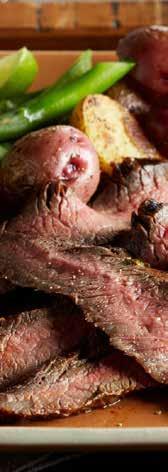
Chipotle-Marinated Beef Flank Steak
INGREDIENTS: 1 beef Flank Steak (about 1-1/2 to 2 pounds)
MARINADE: 1/3 cup fresh lime juice • 1/4 cup chopped fresh cilantro leaves • 1 tablespoon packed brown sugar • 2 teaspoons minced chipotle chilies in adobo sauce • 2 tablespoons adobo sauce (from chilies) • 2 teaspoons minced garlic • 1 teaspoon freshly grated lime peel
COOKING: Combine marinade ingredients in a small bowl; mix well. Place beef Flank Steak and marinade in food-safe plastic bag; turn steak to coat. Close bag securely and marinate in refrigerator 6 hours or overnight.
Remove steak from marinade; discard marinade. Place steak on grid over medium, ash-covered coals. Grill, covered, 11 to 16 minutes (over medium heat on preheated gas grill, 16 to 21 minutes) for medium rare (145°F) to medium (160°F) doneness, turning occasionally. Carve steak across the grain into thin slices. Season with salt, as desired.
Cook’s Tip: To broil, place steak on rack in broiler pan so surface of beef is 2 to 3 inches from heat. Broil flank steak 13 to 18 minutes for medium rare to medium doneness, turning once.

Mediterranean Beef Meatball Kabobs
INGREDIENTS: 1 pound Ground Beef (93% lean or leaner) • 1/4 cup dry breadcrumbs • 2 egg whites or 1 whole egg • 2 tablespoons chopped fresh parsley • 2 tablespoons water • 2 teaspoons minced garlic • 1 teaspoon ground cumin • 1/2 teaspoon salt • 1/4 teaspoon pepper • 4 flatbreads (such as naan, lavash or pita bread)
TOPPINGS: Chopped tomatoes • chopped cucumber • chopped red onion • chopped fresh parsley • Tzatziki sauce
COOKING: Heat oven to 400°F. Combine Ground Beef, breadcrumbs, egg whites, parsley, water, garlic, cumin, salt and pepper in large bowl, mixing lightly but thoroughly. Shape into 12, 2-inch meatballs. Thread meatballs onto 4 10-inch skewers. Place on rack in broiler pan that has been sprayed with cooking spray. Bake in 400°F oven 24 to 27 minutes.
Cook’s Tip: Cooking times are for fresh or thoroughly thawed Ground Beef. Ground Beef should be cooked to an internal temperature of 160°F. Color is not a reliable indicator of Ground Beef doneness. Remove meatballs from skewers. Serve in flatbreads. Garnish with Toppings, as desired.
ALTERNATIVE COOKING METHOD: Recipe can be made in a 8-quart Air Fryer. Heat Air Fryer to 350°F. Place un-threaded meatballs into Air Fryer basket sprayed with cooking spray. Bake at 350°F for 24 to 27 minutes or until instant-read thermometer inserted into center registers 160°F.
May • Cow Country • 37

Keeping Cattle Healthy with BQCA
Jake Harrod Program Coordinator, Kentucky Beef Network
To raise an animal with respect means to care for an animal’s safety, care and health. The Raised with Respect BQCA training put all of this together and gave attendees the opportunity to put what they learned into practice plus a bit more. The purpose of the day was to give a wellrounded experience to show that how a farmer treats their animal matters and can have a lasting effect all the way to the plate that someone eats off of.
The day began with some opening comments. Then, we hopped right into a panel focused on the importance of beef quality. Attendees were able to ask the panel members any questions pertaining to why cattle handling and care mattered all the way from the pasture to the plate. The panel was made up of Chef Josh Moore from Volare Italian Ristorante, Chef Zach Wolf from Steak and Bourbon and Carey Brown of the Kentucky Beef Council. Kirsten Nickles from Certified Angus Beef served as moderator. Beef quality matters for a lot of reasons; everybody wants a higher quality beef that also has a great look. The chefs talked about why beef quality matters to them and how they take pride in serving higher quality meats and how they appreciate the work farmers do to produce the meats we eat. Next, attendees went through rotations that covered a wide variety of topics. Outside in the cattle handling facility Kevin Laurent from the University of Kentucky and Ben Lloyd of the Kentucky Beef Network guided attendees through a BQCA chute-side training and cattle handling demonstration. This included how to safely and carefully move cattle and work them into a Ben


chute, where and how to safely give vaccinations and all of the biosecurity that goes into working cattle. The next rotation was with Darrh Bullock and Katie VanValin from the University of Kentucky going over management practices for cattle care. Some of these practices included managing your cattle’s body condition scores so that they do not become too thin or too overweight and using EPDs (Expected Progeny Differences) to guide your cattle herd in a direction that is best for the animal’s care and for the producer as well. Dr. Michelle Arnold with the University of Kentucky led a group discussion about spring vaccination protocols. This presentation gave attendees the opportunity to see the many available options for vaccinating their cow herd.
At the end of the day, everyone headed back to the main room where they did their BQCA exams to receive their certifications while also enjoying some great appetizers from the chefs. After everyone finished their exams, we then were given the amazing opportunity to eat a delicious meal that the chefs made. To round out the night, Paul Dykstra from Certified Angus Beef gave a market update that compared past and current prices and a discussion about where the market is headed.
Overall, this was a great opportunity to get your BQCA certification, hear some great talks from professionals and enjoy a wonderful meal. A big thanks goes out to all the attendees, the speakers, Chefs Josh and Zach, and especially to Certified Angus Beef and Sysco.
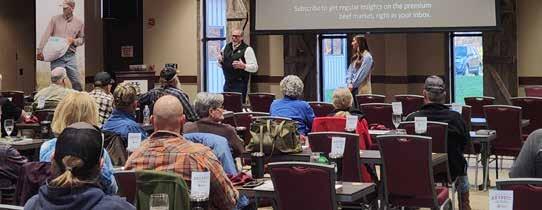
38 • Cow Country • May
Whitesville,
(270)
benlloyd0223@gmail.com Charles Embry Cave City, KY (270)
dale.embry@yahoo.com Jacob Settles Springfield, KY (859) 805-0724 jacob.settles4@yahoo.com
Winchester, KY
KENTUCKY BEEF NETWORK FIELD ASSOCIATES
Lloyd
KY
993-1074
646-5939
Ron Shrout
(606) 205-6143 ronshrout@bellsouth.net

Eden Shale Update
Dan Miller Industry Coordinator, Kentucky Beef Network
Calving season is hard work. It doesn’t have set hours. It doesn’t care about the weather, and sometimes, the cows can be just plain mean about it. So, if a task is so cumbersome, why make it last forever?
At Eden Shale Farm, we have worked hard to make our calving season as short as possible. If you look back to 2014, our first calving season at the farm lasted 105 days, and we only had 32% of the calves born in the first 45 days of the calving season. It was a long, tough season, and I wondered why we decided to calve in the spring.
2015 was our first AI calf crop, and thus, we experienced some tightening of the calving window because of the synchronization protocol. That season, we had 79% born in the first 45 days. We have continued to AI every year and have been working on condensing the calving window even further.
We have also been pulling out the clean-up bulls earlier to help eliminate the late-season births. Those late calving cows typically won’t get AI bred, and they tend to be tougher to breed back on time. We allow the
clean-up bulls to stay with the cows for two heat cycles after AI, giving the cows three opportunities to get bred. If they don’t breed in three attempts, we cull them from the herd.
In 2021, we got above 90% born in 45 days for the first time, and today we continue to make progress. The 2024 calf crop has been born in the tightest window yet. This year we achieved our all-time high of 96% born in the first 45 days of the calving season. The first 50% were born in 22 days.
I do not expect to improve on these numbers. Instead, it is my goal to keep at least 90% or more of the calves born in 45 days. Having all the calves born in such a tight window makes it calving easier to manage. It also creates a lot of uniformity to the calf crop, which is a marketing advantage.
There are very few factors of the cattle business that you have complete control over. However, the length of your calving season is one of them. It is up to you to manage your herd in a manner to give yourself every possible advantage.


May • Cow Country • 39




























































































































SAVORING SUCCESS




























INSIDE THE CULINARY HUB OF THE BEEF CHECKOFF





Culinary arts are at the core of the Beef Checkoff because, at the end of the day, the ultimate measure of consumer support and satisfaction lies in beef’s great eating experience. The Beef Checkoff is a leading voice and resource for beef culinary knowledge, experiences and innovation worldwide. This vision comes to life within the Checkoff-funded Beef. It’s What’s For Dinner. Culinary Center.









40 • Cow Country • May DrivingDemandForBeef.com APRIL 2024
STORY CONTINUED ON NEXT PAGE
Savoring Success
CONTINUED FROM COVER







Located inside the National Cattlemen's Beef Association’s (NCBA) headquarters in Centennial, Colorado, the Culinary Center is so much more than a kitchen – it's a hub for fostering innovation and culinary exploration. Many Beef Checkoff-funded programs and initiatives are housed in this space, including new recipe development and cooking techniques, exploration of new cuts and technologies, influencer and chef partnerships, media tours and foodservice innovation sessions. Whether directly or indirectly, all Beef Checkoff-funded programs, from promotion to research to consumer information, leverage the data and insights generated at the Culinary Center.







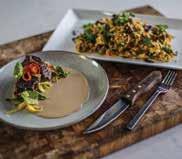
HISTORY
The official Beef Checkoff Culinary Program launched when the National Livestock and Meat Board and the National Cattlemen's Association merged in 1996. The Culinary Center initially operated at the NCA office in Chicago before being relocated to Centennial, Colorado, in 2001.
From the beginning, the program has led to the development of hundreds of culinary publications, along with countless cooking demonstrations, product tests and many educational seminars. Now, the program’s culinarians and chefs are conducting webinars. Historically, more than 2,500 beef recipes have been developed, changing over time to fit consumer cooking trends and preferences.

RECIPE HUB
Currently, there are more than 1,000 active recipes on the Beef Checkoff -funded Beef. It's What's For Dinner. website, most of them developed by the Checkoff 's culinary team and the rest by infl uencer chefs and industry professionals. The Beef. It's What's For Dinner. website receives 8.8 million visitors annually.

The Beef. It’s What’s For Dinner. website is the central location for all recipes. In addition to recipes, cooking guides, and other consumer information, there are cutting guides, cut charts, menu inspirations and additional culinary information for industry professionals.
Promotion and advertising efforts — from social media to traditional print consumer publications to commercials on streaming services like Hulu and Paramount+ — drive people back to the Beef. It's What's For Dinner. website. There, consumers are inspired to try new recipes and purchase beef.
CULINARY TEAM EXPERTISE
Today, the Culinary Center has grown and evolved from its relatively humble beginnings, featuring consumer and foodservice food production and testing. Two in-house executive chefs share duties, with one focusing on consumers and the other concentrating on business-tobusiness efforts.
The Executive Chef of Innovation and Culinary Services leads the culinary catering and recipe development functions as well as product culinary exploration.
On average, the culinary team develops 25 recipes each year. These recipes are typically in line with seasonal campaigns, like the upcoming Beef. It's What's For Dinner. Summer Grilling campaign, where inspirational recipes will be categorized as Grilling Favorites, The Tastiest Burgers, BBQ for You or Flavorful Smoked Beef Recipes.





The Executive Chef of Outreach and Education provides culinary expertise, content development and education to culinary professionals throughout the beef industry, including restaurant operators, food service distributors, retailers and manufacturers. This chef also works with culinary educators and state and national culinary associations.
In addition to recipe development, the culinary team extensively researches beef cuts, looking for new ways to apply cooking techniques like the use of pressure cookers, and how to better the craft of beef preparation. The practice of "beef cookery" also takes place, testing and developing optimum cooking times for various cuts of beef. Not all people want a recipe; they may want guidance on how to cook a particular cut, such as a steak on the grill, or safe food handling techniques. Contributors like Ph.D. meat scientists also come in to advise on new cuts and cooking exploration, and nutritionists counsel on nutrition values.
The executive chefs and culinary team also collaborate with notable chefs and leading culinary experts from around the globe to provide consumers with highly engaging content and reliable beef information.
PROGRAM COLLABORATIONS
Beef. It's What's For Dinner. partners with celebrity chefs, culinary instructors
May • Cow Country • 41
and other subject matter experts to create educational and inspirational content for consumer audiences. These partnerships result in multiple video series filmed in the Culinary Center and released on YouTube, social media platforms and streaming services. The videos highlight the pleasurable eating experience and versatility of beef. Recent video series have showcased familiar and famous chefs to attract viewers through:
Beef Substitutes: Turning a traditionally non-beef recipe into a beef recipe.
Making the Most of Your Meals: Making two recipes, with the second being made from leftovers of the first.
Tips & Tricks: Chef's personal tips for making the best beef meals. This series garnered 6.7 million video views.
CULINARY CENTER EVENTS
Foodservice innovation sessions are also happening in the Culinary Center. Leading companies from quick service restaurants to fast casual to manufacturer partners have worked with the Culinary Center to get help with menu development, explore current trends and market insights, experiment with new cuts and cooking methods or expand existing beef items into new menu concepts. The Beef Checkoff collaborates with a restaurant's executive team to explore ways to improve existing beef menu items or create new items to increase customer satisfaction and beef sales.
Additionally, educational webinars for industry partners and State Beef Councils, inspiration demonstrations, ideation sessions, cutting and cooking demonstrations, influencer video sessions, recipe photography, educational videos and tours all happen at the Culinary Center.
SATELLITE MEDIA TOURS
Another compelling use of the Culinary Center are satellite media tours, or SMTs. During these sessions, TV and radio stations nationwide dial into the Culinary Center to join the Beef. It's What's For Dinner. team and chat with beef subject matter experts, chefs and nutritionists about a predetermined, newsworthy topic that often also includes beef recipes. Three to four media tours occur annually, with topics ranging from heart health, tailgating, back to school, sustainability, summer grilling and the holidays, among others. During a typical media tour, TV and radio broadcasters conduct approximately 20-25 interviews within a number of hours. These interviews are redistributed and posted multiple times, resulting in more than 1,000 placements on TV, radio and online.
These cumulative eff orts drive beef sales and boost consumers' positive perception of beef. In addition to national eff orts, the Beef. It's What's For Dinner. team also leverages culinary programs on the state level.
STATE SUPPORT
State Beef Councils utilize the Beef. It's What's For Dinner. team to develop recipes, conduct educational webinars for influencers or industry partners, assist with various on-site events and consult on recipes and other culinary needs. New this year, the culinary team will be supporting State Beef Councils with recipes specifically developed for their market needs. The goal is to create eight new recipes directly supporting the states this year.
From its inception to its present-day initiatives, the Culinary Center is a hub for innovation and collaboration, shaping the landscape for the Beef Checkoff 's promotional eff orts and driving beef sales.
Explore all the beef recipes and resources at BeefItsWhatsForDinner.com.
Producer Content Survey Results
Thank you to everyone who participated in our producer survey! The Cattlemen’s Beef Board (CBB) set out to understand how U.S. beef farmers and ranchers felt about the industry, the Beef Checkoff and the information we’re sharing to show the impact of Checkoff-funded projects. Of the nearly two thousand producers who took the survey, 48 percent expect sales to improve during the next year. Here’s more of what producers had to say:
Which topics are you most interested in relation to how Beef Checkoff dollars are invested?
The CBB uses this information to help guide the Producer Communications program and develop stories and updates about the Beef Checkoff ’s demand-driving programs, delivering the information to producers in multiple convenient formats.
Source: Cattlemen's Beef Board (Jan. 2024) 2023 Producer Content Survey Results.
BEEF CHECKOFF HIGHLIGHTS
Topic All Printed magazine and newspapers 77% Emailed or printed newsletters 66% Websites 60% Other beef or dairy producers 47% Industry experts and authorities 44% Social media 38%
sources are
to
regarding the cattle industry? Topic All Efforts to address misinformation from anti-meat groups and individuals 48% Programs to educate consumers about the benefits of eating beef 45% Educate consumers and producers regarding benefits of real beef versus alternative proteins 45% Programs to educate children and schools regarding beef 43% Efforts to address negative media/bad press regarding beef 39%
What
used
obtain information





















Cattlemen’s Beef Board Elects New
2024 Officers



Cattle producers Andy Bishop of Kentucky, Ryan Moorhouse of Texas and Dr. Cheryl DeVuyst of Oklahoma are the new leaders of the Cattlemen’s Beef Promotion & Research Board (CBB). The trio is responsible for guiding the national Beef Checkoff throughout 2024, alongside immediate Past Chair Jimmy Taylor.






ANDY BISHOP Chair



Bishop and his wife Meagan of Cox’s Creek, Kentucky are raising their four children on their registered Angus seed stock operation, Fairfield Farm. Bishop began his career teaching agriculture and moved into the field of agriculture lending in 2007. Bishop is the former chair of the Kentucky Beef Council, Kentucky Cattlemen’s Association and the National Cattlemen’s Beef Association (NCBA) Young Cattlemen’s Conference. Bishop also served as a member of the Beef Industry Long Range Planning Task Force and as president of the NCBA's Young Producers Council and the Kentucky Cattlemen’s Young Producers group.
















The beef industry is in a unique situation as 2024 gets underway,” Bishop said. “Producers have been dealing with adverse weather and production cost conditions over the past few years, leading to herd liquidation. While things do seem to be improving, the Beef Checkoff must continue to be vigilant, developing the right programs and messaging to keep beef demand high. I’m excited to lead the CBB as we navigate the opportunities and challenges this year sends our way.”








RYAN MOORHOUSE
Vice Chair

Moorhouse grew up in North Central Texas on his family’s cow/ calf and stocker operation. After graduating from Texas A&M University, Moorhouse went to work for Continental Grain Cattle Feeding (now Five Rivers). He currently serves as the general manager for Hartley Feeders, a Five Rivers Cattle Feeding operation. A resident of Amarillo, Texas, Moorhouse, his wife Colette and their two sons also operate a stocker operation back home on part of the family ranch.














DR. CHERYL DEVUYST Secretary-Treasurer






Dr. Cheryl DeVuyst and her husband, Eric, own DeVuyst Ranch, a cow-calf and stocker operation. DeVuyst is also a professor of agricultural economics at Oklahoma State University and head of its Ag Econ department. DeVuyst is involved with numerous agricultural organizations, including Oklahoma CattleWomen, Oklahoma Cattlemen’s Association, National Cattlemen’s Beef Association (NCBA), Oklahoma Farm Bureau, Pawnee County CattleWomen, Agricultural and Applied Economics Association and American National CattleWomen. She’s also a faculty advisor for the Oklahoma Collegiate CattleWomen and is a past board member of the Western Agricultural Economics Association.












May • Cow Country • 43
Andy Bishop







Our CBB members and staff are incredibly fortunate to have three strong beef industry leaders and advocates like Andy, Ryan and Cheryl at the helm of this organization. Each has unique experience and perspective to share, representing producers from across the U.S. As we begin our journey through 2024, I’m looking forward to working with this leadership team to launch programs and initiatives that drive beef demand and benefit producers nationwide.”
Greg Hanes
CEO of the Cattlemen’s Beef Board


Meet the New Cattlemen’s Beef Board Members





Strong Finish for Beef Exports
The Cattlemen’s Beef Board welcomed 26 members appointed/ reappointed to serve on the board this spring. These leaders have deep roots in the cattle industry and volunteer their time to the board. Members are individually nominated by certified organizations and appointed by the Secretary of Agriculture to serve a three-year term.



December exports of U.S. beef totaled 108,497 metric tons (mt), down 4 percent year-over-year (YOY) but the largest export monthly total since August. Export value was also the highest since August and climbed 10 percent YOY to $860.8 million. 2023 beef exports totaled 1.29 million mt, down 12 percent from the 2022 record. While export value fell 15 percent to just under $10 billion, this was still the thirdhighest annual value for beef exports. 10
Source: Data compiled by the U.S. Meat Export Federation.
NEWLY APPOINTED/REAPPOINTED MEMBERS ARE:
Arkansas – Caleb Plyler, Hope, AR
Colorado – Sallie R. Miller, Briggsdale, CO
Florida – Sarah K. Childs, Lake Placid, FL
Idaho – Tucker Shaw, Caldwell, ID and Gwenna R. Prescott, Carey, ID


Kansas – Marisa Kleysteuber, Garden City, KS and Jacquelyne Renae Leffl er, Americus, KS
Kentucky – Andy Bishop, Cox’s Creek, KY
Missouri – Kalena Bruce, Stockton, MO
Montana – Verna J. Billedeaux, Browning, MT


Nebraska – Gina M. Hudson, Belvidere, NE; Bree A. DeNaeyer, Seneca, NE; and Don V. Cain, Jr., D.V.M., M.S., Broken Bow, NE
North Dakota – Jason Schmidt, Medina, ND
Oklahoma – Cheryl DeVuyst, Morrison, OK and Gaye Pfeiff er, Mulhall, OK


South Dakota – David O. Uhrig, Hermosa, SD
Texas – JoJo Carrales, Flatonia, TX; Ryan Moorhouse, Amarillo, TX ; Mark Sustaire, Winnsboro, TX; and Pat McDowell, Wheeler, TX


Southwest Unit – Melissa Daniels, Nicasio, CA
Importer Unit – Doug McNicholl, Washington, DC; Kimberly A. D’Anella, Wenonah, NJ ; Andrew Banchi, Trevor, WI ; and Matthew Allan, Washington, DC (1-year term)











On The Farm STEM Heads to Kentucky

The On The Farm STEM program pairs educators with experts in science education and agricultural science to inspire today’s students to use agriculture to improve society. This year, the beef STEM Immersive Experience will be held in Louisville, Kentucky, June 16–19. The event will include two pre-webinars, a three-day in-the-field experience, one post-event webinar and more. By connecting with the young minds of schoolchildren through their teachers, the Beef Checkoff engages with tomorrow’s beef consumers today.



























BEEF CHECKOFF HIGHLIGHTS

BEEF INDUSTRY CONSUMER INSIGHTS





UNDERSTANDING HOW CONSUMER


DEMAND DRIVERS, VIEWS, PREFERENCES AND BUYING HABITS DRIVE BEEF DEMAND.









From identifying shifting trends to anticipating emerging consumer preferences, research helps the Beef Checkoff make informed decisions. By understanding consumer demand drivers, views, preferences and buying habits, Checkoff contractors can develop and execute targeted strategies and programs to successfully drive demand for beef. Check out the following key takeaways from the 2024 Beef Industry Review of Consumer Insights.

To view the full report, visit www.beefresearch.org/ programs/market-research

Beef demand has remained strong as consumers repeatedly claim they will purchase beef, both in retail and foodservice settings. Consumers continue to rank beef as a top source of protein, superior in taste, nutrition and agree that it is good for social gatherings and special occasions.
EATING EXPERIENCE
Consumer Perceptions: Great Tasting (%)


Beef consistently tops chicken as a protein providing great taste. In 2023, beef surpassed chicken as great tasting by more than 20 points and as recent as Q4 '23 by nearly 30 points.


Positive Beef Eating Experience
At Home At Restaurant


Source: Consumer Beef Tracker, 2023
FUTURE MARKETPLACE EXPECTATIONS FOR BEEF
Future Consumption of Beef




Whether dining out or eating beef at home, a majority of consumers report a positive eating experience when consuming steak, ground beef or roast beef. Eat None Eat Less Eat the Same Eat More
Asked about the future consumption of beef, 80% of consumers respond they will maintain or increase current levels, while just 14% are planning to eat less. Driving increased consumption of beef: taste, protein in the diet and quick and easy preparation. Price



Concerned beef will negatively impact long-term health
Eating less beef is better for the environment
Cutting back due to health conditions such as heart... Beef has too much fat
Source: Consumer Beef Tracker, 2023



Beef Chicken Pork Meat Alt. 55 31 8 7 56 30 8 6 53 34 8 6 56 29 9 6 57 27 9 8 58 27 7 7 56 30 9 6 59 26 8 7 57 29 7 6 56 30 9 6 57 28 8 7 56 29 9 6 57 30 8 6 56 29 9 7 57 31 7 6 59 28 7 6 58 29 7 6 54 32 7 7 58 31 6 5 58 30 6 6 Q1 '19 Q2 '19 Q2 '21 Q4 '19 Q4 '21 Q2 '20 Q2 '22 Q4 '20 Q4 '22 Q2 '23 Q3 '23 Q3 '19 Q3 '21 Q1 '20 Q1 '22 Q3 '20 Q3 '22 Q1 '21 Q1 '23 Q4 '23 Source:
92% 89% 92% 90% 89% 89% Steak
Consumer Beef Tracker, 2019 - 2023
Ground Beef Roast Beef
is too expensive
Other meats are healthier
5.8% 3.7% 3.0% 2.8% 2.6% 2.6%
Grilling
Greater
beef 6.8% 3.8% 3.7% 3.7% 3.4% Reasons to Eat More Beef 15% Plan to eat more Reasons to Eat Less Beef 14% Plan to eat less 15% 65% 14% 6% Beef
You enjoy the taste of beef Adding protein to your diet A beef meal is quick and easy to prepare
more often
availability of

Consumer Perception of Beef
Overall, 90% of consumers express a positive to neutral sentiment about beef as a protein.
Overall Perception of Beef


When considering how cattle are raised for food, 80% respond positive to neutral Perception of How Cattle Are Raised for Food
AT-HOME DINING INSIGHTS


When deciding what protein to have with a meal at home, consumers prioritize taste, value for the money and their budget.
Meals Cooked at Home

Nearly ¾ of consumers are cooking their meals at home while nearly 90% say they plan to cook the same or more meals at home.


IN-STORE PURCHASING BEHAVIOR
Anticipating

Source: State of the Consumer Survey, 2023

Looking ahead to the next six months, nearly 50% of consumers anticipate dining out less and using coupons to maximize their dollar.
Less dining out
Look for deals or use coupons more often
Stock-up/freeze items more often
Find more ways to use leftovers
Buy store or private label brands instead of name brands Search more recipe ideas using chicken

Source: State of the Consumer Survey, 2023


(Such as Target, Walmart, etc.)
Beef for Backpacks: A Collaborative Effort to Combat Childhood Food Insecurity
Source: State of the Consumer Survey, 2023



The Beef for Backpacks Program, launched by the Wyoming Hunger Initiative, arose from a discussion between the Wyoming Beef Council’s Ann Wittmann and Wyoming’s First Lady Jennie Gordan to provide high-quality protein snacks to food-insecure schoolchildren. Starting with a pilot program in early 2023 in Laramie County that distributed 1,100 beef sticks weekly, it has since expanded statewide through partnerships with various organizations including the Wyoming Beef Council, 307 Meat Company and the Wyoming Stock Growers Association. The program relies on donations from businesses, ranchers and volunteers to process, package and distribute beef sticks to ensure weekend meals for at-risk youth across Wyoming.
46 • Cow Country • May
& GROWN
RAISED
STATE PROGRAM FEATURE: WYOMING
FUTURE AT-HOME COOKING BEHAVIOR 40% More Less 12% About the Same 48% OF MEALS ARE COOKED AT HOME 73% Negative 10% Neutral 20% Positive 70% Negative 20% Neutral 37% Positive 43% Source: Consumer Beef Tracker, 2023
Shop at diff erent
than
would (i.e, less expensive/more discounts stores) 47% 46% 37% 37% 30% 30% 25% Consumers shopping 2.2 channels/month on average 36% Grocery Stores
Mass Merchandiser
Club Store (Such as Costco, Sam's Club, etc.) Natural Foods Store ( Such as Whole Foods, Sprouts, etc.) Order online and pick up at local grocery store Order online from your local grocery store and have delivered 76% 23% 17% 13% 11%
stores
I normally
(Such as Kroger, Safeway, etc.)
Changes to Shopping & Dining Habits in Next 6 Months
Common Locations Where Beef is Purchased
Most
When purchasing beef to eat at home, consumers are most likely to make purchases from a grocery store or mass merchandiser.






Cattle Calling:















Everyone relies on agriculture, but only 27 percent of consumers say they are familiar with how cattle are raised1. To help bridge this gap, the Beef Checkoff released a new docuseries, "Cattle Calling." This series enhances consumer education and sheds light on how farmers and ranchers are just like everyone else; they have a job to do, a family to provide for and a way of life to sustain. Only by caring for the land they are entrusted with they can maintain that way of life and pass it down to future generations.





















SHARING RANCHERS WAY OF LIFE



























May • Cow Country • 47 @BeefCheckoff @BeefCheckoff Subscribe to The Drive at DrivingDemandForBeef.com @BeefCheckoff @BeefCheckoff Source: 1Consumer Beef Tracker January – December 2022 Watch the first three episodes at www.cattlecalling.org
Oklahoma rancher Clay Burtrum and his daughter, Kinzie

KCA HALL OF FAME AWARD
The Kentucky Cattlemen’s Association Hall of Fame is designed to honor a member of the organization that has given time, service, and talent to the betterment of the Cattlemen’s Association at the county and/or state levels.
2025 applications must be postmarked by June 30th, 2024.
Call us at (859) 278-0899 with questions.
48 • Cow Country • May
Application available at kycattle.org. DO YOU KNOW AN OUTSTANDING CATTLEMAN?
Kentucky Hereford Association
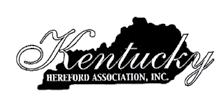

Toby & Debby Dulworth
Toby & Debby Dulworth 2492 S. Kirkman Road LaCenter, KY 42056 (270) 224-2993
2492 S. Kirkman Road
LaCenter, KY 42056 (270) 224-2993
dogwood@brtc.net
dogwood@brtc.net
Herefords that thrive on forages. www.dogwoodherefords.com
Herefords that thrive on forages. www.dogwoodherefords.com

6077 Helena Road
6077 Helena Road
Mayslick, KY 41055
Mayslick, KY 41055
Kentucky Certified Hereford Influenced Sale
May 20, 2024 • Bluegrass Stockyards Lexington
Chris Hopper KHA President 606-584-7842
LW Beckley DVM 859-779-1419

WELLS FARM
Polled Herefords
WELLS FARM Polled Herefords
439 Flatwoods Frozen Camp Rd, Corbin KY 40701
439 Flatwoods Frozen Camp Rd, Corbin KY 40701
Bobby & Brenda Wells (606) 523-0569 or (606) 344-0417
Bobby & Brenda Wells (606) 523-0569 or (606) 344-0417
wells_farm@yahoo.com
wells_farm@yahoo.com
Kevin, Angela, Kenlea & Kyler Murray (606) 528-1691 or (606) 682-8413
Kevin, Angela, Kenlea & Kyler Murray (606) 528-1691 or (606) 682-8413

MPH Farms
MPH Farms
Registered Polled Herefords
Charlie Boyd II
Charlie Boyd II 606-584-5194
606-584-5194
PAUL L. HANCOCK
Annual Bull Sale second Saturday in March
Annual Bull Sale second Saturday in March
Hereford and Angus Bulls
Hereford and Angus Bulls
Chambliss Hereford Farms
Chambliss
Hereford Farms
Brad, Carla, Clay & Clint Chambliss
Brad, Carla, Clay & Clint Chambliss 1101 Driftwood Lane
1101 Driftwood Lane
Elizabethtown, KY 42701
Elizabethtown, KY 42701
Home (270) 982-3905
Home (270) 982-3905
Cell (270) 668-7126
Cell (270) 668-7126
fax 270-735-9922
fax 270-735-9922
www.chamblissherefordfarms.com
www.chamblissherefordfarms.com

WCN Polled Herefords
Since 1961
Bill Norris 2220 Celina Road
Burkesville, KY 42717
Phone (270) 433-7256
Cell (270)

Registered Polled Herefords PAUL L. HANCOCK 8559 KY 56 Owensboro, KY 42301 270-771-4194
8559 KY 56 Owensboro, KY 42301 270-771-4194

Jackson Farms
Jackson Farms
Registered Polled Herefords PO Box 215 Cross Plains, TN 37049 615-478-4483
Registered Polled Herefords PO Box 215 Cross Plains, TN 37049 615-478-4483
billymjackson@aol.com
billymjackson@aol.com
“Farming the Same Land Since 1834”
“Farming the Same Land Since 1834”

KHA OFFICERS
KHA OFFICERS
President: Chris Hopper 606-584-7842
President: Chris Hopper
606-584-7842
Secretary/ Treasurer:
Secretary/ Treasurer: Melinda Watson
Melinda Watson 859-625-8660
859-625-8660
melindawatson8660@gmail.com
melindawatson8660@gmail.com
K3 CATTLE
K3 CATTLE REGISTERED HEREFORDS
REGISTERED HEREFORDS
KYLE BUSH
KYLE BUSH
K3CATTLE@YAHOO.COM 859-588-4531
K3CATTLE@YAHOO.COM
859-588-4531
198 HICKS PIKE
198 HICKS PIKE
CYNTHIANA, KY 41031
CYNTHIANA, KY 41031
THOMAS FARM
THOMAS FARM
Eric & Ronnie Thomas
Eric & Ronnie Thomas 2396 Union City Rd. Richmond, KY 40475 (859) 623-5734
2396 Union City Rd. Richmond, KY 40475 (859) 623-5734
Eric’s Cell (859) 314-8256
Eric’s Cell (859) 314-8256
“Cattle for sale at all times”
“Cattle for sale at all times”


NJB Limited
NJB Limited
Dale Stith
Dale Stith
5239 Old Sardis Pike
5239 Old Sardis Pike
Mays Lick, KY 41055
Mays Lick, KY 41055
dalestith@yahoo.com (918) 760-1550
dalestith@yahoo.com (918) 760-1550


HEREFORDS
HEREFORDS
Codee Guffey • 1815 Grassy Springs Road Versailles, Kentucky 40383 (502) 598-6355
Codee Guffey • 1815 Grassy Springs Road Versailles, Kentucky 40383 (502) 598-6355
rockridgeherefords@gmail.com
rockridgeherefords@gmail.com
www.rockridgeherefords.com
www.rockridgeherefords.com
TK4 Herefords
TK4 Herefords
Polled Hereford and Gelbvieh Cattle 3459 KY Hwy. 1284 E. Cythiana, KY 41031 (859) 234-6956
Polled Hereford and Gelbvieh Cattle 3459 KY Hwy. 1284 E. Cythiana, KY 41031 (859) 234-6956
Ben, Jane, Shelby and Lincoln
Ben, Jane, Shelby and Lincoln
Windy Hills Farm
Windy Hills Farm
Jackie D. Perkins II
367 Mt. Pisgah Rd. Bremen, KY 42325 (270) 543-3586
Jackie D. Perkins II 367 Mt. Pisgah Rd. Bremen, KY 42325 (270) 543-3586
Breeding to produce good cows since 1981
Breeding to produce good cows since 1981


Tony & Kathy Staples 992 Knotts Road Brandenburg, KY 40108 (270) 422-4220
Tony & Kathy Staples
992 Knotts Road
Brandenburg, KY 40108 (270) 422-4220
tstaples@bbtel.com
tstaples@bbtel.com
PILE STOCK FARM
PILE STOCK FARM
Registered Polled Herefords
Registered Polled Herefords
HANSELL PILE, JR.
HANSELL PILE, JR. 12045 St. John Rd. Cecilia, KY 42724
12045 St. John Rd. Cecilia, KY 42724
270-735-5192
270-735-5192
270-862-4462
270-862-4462
12 miles West of Elizabethtown


calf
face”
FARM
Polled Herefords
& Females for sale
& Peggy
12939 Peach Grove
Alexandria, KY 41001 Home: 859-635-0899 Cell: 859-991-3484 BECKLEY HEREFORDS
Wayne Beckley • 1420 Fitchburg Rd. Ravenna, KY 40472 • 606-723-3021 Cell: 859-779-0962 L.W. Beckley D.V.M 284 Pyrse Lane • Irvine, KY 40336 Cell: 859-779-1419 • Clinic: 606-726-0000 www.beckleyherefords.com “Breeding Polled Herefords for over 58 Years” Breeding cattle for sale at all times. 1999 Walnut Hill Rd. Lexington, KY 40515 (859) 271-9086 cell (859)533-3790 Tucker Stock Farms “Registered Angus and Polled Herefords” John Tucker II 1790 Hidden Valley Lane Hudson, KY 40145 270-617-0301 “Bulls always for Sale” Shannon, Kerry, Emily, Will & Ellie Morgan 13095 Scottsville Rd, Alvaton, Kentucky 42122 www.morganandmorganpolledherefords.com Shannon: (270) 320-2389 Peyton’s Well Polled Herefords The Lowell Atwood Family 133 Edgewood Drive • Stanford, KY (606) 365-2520 home/fax (606) 669-1455 cell Victor- influenced cattle bred for performance on grass. “Black cows need a good Hereford Bull” Danny Miller jmspolledherefords.com 270-465-6984 270-566-2694 WATSON LAND & CATTLE Matt, Melinda, Harlee, & Wyatt Watson 6196 Mount Sterling Rd Flemingsburg, Kentucky melindawatson8660@gmail.com - 606-748-1600 Melinda - 859-625-8660 CATTLE FOR SALE AT ALL TIMES TUCKER STOCK FARMS “Registered Angus and Polled Herefords” John A. Tucker II 1790 Hidden Valley Lane Hudson, KY 40145 (270) 257-8548 Office (270) 257-8167 18-month-old Angus & Polled Hereford Bulls For T S F 4850 Caldwell Ridge Rd. Knifley, KY 42753 270-465-6984 Fertility Milking Ability Calving Ease Disposition Multi-Trait Selection LINEBRED VICTOR DOMINO CATTLE Kentucky Hereford Association Kentucky Beef Expo Schedule
March 1st - Hereford Show - 1pm Saturday March 2nd - Hereford Sale - 1pm Sunday March 3rd - Open Junior Show - 8am
433-1525 “Every
needs a white
WOLF
Registered
Bulls
Tim
Wolf
Road
L.
Friday
Elizabethtown WCN
1961
Norris 2220 Celina
Burkesville,
(270) 433-7256
(270) 433-1525
FARM
Polled Herefords Bulls & Females for sale Tim & Peggy Wolf 12939 Peach Grove Road Alexandria, KY 41001 Home: 859-635-0899 Cell: 859-991-3484 BECKLEY HEREFORDS L. Wayne Beckley • 1420 Fitchburg Rd. Ravenna, KY 40472 • 606-723-3021 Cell: 859-779-0962 L.W. Beckley D.V.M 284 Pyrse Lane • Irvine, KY 40336 Cell: 859-779-1419 • Clinic: 606-726-0000 www.beckleyherefords.com “Breeding Polled Herefords for over 58 Years” Breeding cattle for sale at all times. 1999 Walnut Hill Rd. Lexington, KY 40515 (859) 271-9086 cell (859)533-3790 Tucker Stock Farms “Registered Angus and Polled Herefords” John Tucker II 1790 Hidden Valley Lane Hudson, KY 40145 270-617-0301 “Bulls always for Sale” Shannon, Kerry, Emily, Will & Ellie Morgan 13095 Scottsville Rd, Alvaton, Kentucky 42122 www.morganandmorganpolledherefords.com Shannon: (270) 320-2389 Peyton’s Well Polled Herefords The Lowell Atwood Family 133 Edgewood Drive • Stanford, KY (606) 365-2520 home/fax (606) 669-1455 cell Victor- influenced cattle bred for performance on grass. “Black cows need a good Hereford Bull” Danny Miller jmspolledherefords.com 270-465-6984 270-566-2694 WATSON LAND & CATTLE Matt, Melinda, Harlee, & Wyatt Watson 6196 Mount Sterling Rd Flemingsburg, Kentucky melindawatson8660@gmail.com Matt - 606-748-1600 Melinda - 859-625-8660 CATTLE FOR SALE AT ALL TIMES TUCKER STOCK FARMS “Registered Angus and Polled Herefords” John A. Tucker II 1790 Hidden Valley Lane Hudson, KY 40145 (270) 257-8548 Office (270) 257-8167 18-month-old Angus & Polled Hereford Bulls For T S F 4850 Caldwell Ridge Rd. Knifley, KY 42753 270-465-6984 Fertility Milking Ability Calving Ease Disposition Multi-Trait Selection LINEBRED VICTOR DOMINO CATTLE
12 miles West of
Polled Herefords Since
Bill
Road
KY 42717 Phone
Cell
“Every calf needs a white face” WOLF
Registered
BOYD BEEF CATTLE
6077 Helena Road
Mayslick, KY 41055
Charlie Boyd II: (606) 584-5194
Blake Boyd: (606) 375-3718 www.boydbeef.com cboyd2@maysvilleky.net
BURTON & SONS ANGUS
Joe D. or Karen Burton


480 Hominy Hill Rd. Nancy, KY 42544
Joe: (606) 305-3081
Located 15 miles West of Somerset • klburton01@windstream.net
Bulls & females sold private treaty. Inquiries Welcome.
Sell only what we would buy.
Data driven since 1981.
GREAT MEADOWS ANGUS ASSOCIATION
Dale Brown, President
292 Pea Ridge Road
Stamping Ground, KY 40439 859-940-8437
www.greatmeadowsangus.com
LYNN CREEK FARMS
Kris and Sara Lynn
2184 Bardstown Rd
Springfield KY 40069 573-721-6663


APS ANGUS
4040 Taylorsville Rd Taylorsville, KY 40071
Gordon Schubert
502-477-2637 • 502-548-8440
Anne Patton Schubert
502-477-2663 • 502-548-2359
TRIPLE D ANGUS
Nathaniel & Darla Denham


Nathaniel(Bub), Sarah, Ashley Denham (606) 423-2457 • (606) 875-0780 tripledangus.com
PLEASANT HILL FARMS
Gil, Mary, Corbin, Caroline, and Catherine Cowles
500 Rockfield Richpond Road
Rockfield, KY 42274 (270) 843-9021 • Fax (270) 843-9005
BURKS CATTLE CO.
927 Old Liberty Pike • Hustonville, KY 40437 (859) 238-0771 • www.branchviewangus.com
James S. & LuAnn Coffey, Donald & Donna Coffey Annual Production Sale- 2nd Saturday in April
James S. & LuAnn Coffey, Donald & Donna Coffey Annual Production Sale- 2nd Saturday in April

COFFEY ANGUS FARMS
661 Hopewell Road Liberty, KY 42539
Matt Coffey: (270) 799-6288
Dewey Coffey: (606) 706-2699 Genetics for Maximum Profitability since 1984

531 Rick Rd.
Park City, KY 42160
JOHNSON FARMS ANGUS Angus Bulls & Females Slaughters, KY
Keith: (270) 635-0723
Eddie Burks • (270) 991-6398 www.burkscattle.com
Reese: (270) 635-1137

FALL CREEK ANGUS
448 Corder Farm Road
Monticello, KY 42633
Ronnie Corder (606) 348-6588
MT. MORIAH ANGUS FARMS
Bob, Kathy, Rob, and Janna Clark (859) 748-5558 1446 Kennedy Bridge Rd. Harrodsburg, KY 40330
Bob: (859)339-2610 • Rob: (859)612-1594
mtmoriahfarms1@gmail.com www.mtmoriahangus.com
TAMME VALLEY FARM Jacob Tamme, Owner-Operator (859) 583-7134 jacob.tamme@gmail.com www.tammevalley.com
HERITAGE FARM
Tom McGinnis
COFFEY ANGUS FARMS 661 Hopewell Road Liberty, KY 42539
Matt Coffey: (270) 799-6288
1024 Hinkle Lane • Shelbyville, KY (502) 633-1634, home (502) 633-5100, work (502) 655-0164, cell
Dewey Coffey: (606) 706-2699
Genetics for Maximum Profitability since 1984
MT. MORIAH ANGUS FARMS
DAVIS BEND FARMS
Bob, Kathy, Rob, and Janna Clark (859) 748-5558
2315 Davis Bend Road Canmer, KY 42722
1446 Kennedy Bridge Rd. Harrodsburg, KY 40330
timmothyljeffries@gmail.com www.davisbendfarms.com
Bob: (859)339-2610 Rob: (859)612-1594


Tim: (270) 528-6605 • Leslie: (270) 528-6435
mtmoriahfarms1@gmail.com
www.mtmoriahangus.com
SMITHLAND ANGUS FARM
4437 East Hwy 80 Russell Springs, KY 42642
Henry Bryan, Melissa, Bryanna and Blane Smith 606-271-7520
bmsmith@duo-county.com
WHITE FARM
Tim and Amy White 3664 Military Pike Lexington, KY 40513
Home: (859)223-0326
Tim: (859) 509-5401
Amy (859)227-2552 whitefarm4@twc.com

Located 7 miles west of Bowling Green, 1/2 mile off Hwy 68/80
HILL VIEW FARMS
Jimmy Gilles 5160 Lee Rudy Road Owensboro, KY 42301 (270) 929-5370 jcgilles86@gmail.com
FOUR KINGS ANGUS
250 Bright Leaf Dr. • Harrodsburg, KY 40330
Cary & Kim King
Carymking@yahoo.com • fourkingsangus.com
Cary Cell: (859) 613-3734 • Colby Myers - Purebred Manager
OLD BARK FARM
OLD BARK FARM 370 Ferrill Hill, Buffalo,
370 Ferrill Hill, Buffalo, KY 42716
Kenley Conner (502) 905-7825
Registered Angus Cattle

ST. CLAIR FARMS REGISTERED ANGUS
Eric & Sherry St. Clair
13433 Falls of Rough Road
Falls of Rough, KY 40119
Home: (270) 257-2965 • Cell: (270) 617-1079
www.stclairangus.com
Performance Tested Bull & Female Sale April 2020

TWIN CREEK FARM
Shawn, Melissa, Devin & Dylan Gibson (270) 337-3072 or (270) 692-5304
Dennis & Emily 270/337-2128 or 270/402-4338
TRIPLE D ANGUS
Nathaniel & Darla Denham Nathaniel(Bub), Sarah, (606) 423-2457 • (606) tripledangus.com


ANGUS THE BUSINESS BREED President: Henry B. Smith Vice President: Anne Patton Schubert Secretary/Treasurer: Shayna Gibson LOT 6A: Boyd Mona Lisa 2028, Bred yearling by Innisfail X651/723 4013. Mated A.I. June 26 to CMF 1720 Gold Rush 569G ET. LOT 3: Boyd 7154 Rita 2021, Bred yearlig by NJW 84B 4040 Fortified 238F. Mated A.I. April 13 to CMF 1720 Gold Rush 569G ET. LOT 10: Boyd 8005 Lady 0004, 3-year-old by Boyd 31Z Blueprint 6153. Mated A.I. April 30 to Birdwell Dynamic 5022 1673 ET. LOT 57: ASM 876A Kristen 847F ET, 5-year-old by CRR 109 Catapult 322. Mated A.I. April 20 to SHF Houston D287 H086. BOYD BEEF CATTLE 6077 Helena Road Mayslick, KY 41055 Charlie Boyd II: (606) 584-5194 • Blake Boyd: (606) 375-3718 www.boydbeef.com • cboyd2@maysvilleky.net HILL VIEW FARMS Jimmy Gilles 5160 Lee Rudy Road Owensboro, KY 42301 (270) 929-5370 jcgilles86@gmail.com PLEASANT HILL FARMS Gil, Mary, Corbin, Caroline, 500 Rockfield Richpond Rockfield, KY 42274 (270) 843-9021 • Fax (270) Located 7 miles west of BRANCH VIEW ANGUS 927 Old Liberty Pike • Hustonville, KY 40437 (859) 238-0771 • www.branchviewangus.com
SMITHLAND ANGUS FARM 5202 East Hwy 80, Russell Charles “Bud” & Pam Smith: Henry & Melissa Smith: BURKS CATTLE CO. 531 Rick Rd. Park City, KY 42160 Eddie Burks • (270) 991-6398 www.burkscattle.com LYNN CREEK FARMS Kris and Sara Lynn 2184 Bardstown Rd Springfield KY 40069 573-721-6663 ST. CLAIR FARMS REGISTERED Eric & Sherry St. Clair 13433 Falls of Rough Road Home: (270) 257-2965 www.stclairangus.com Performance Tested Bull
&
D. or Karen Burton 480 Hominy Hill Rd. Nancy, KY 42544 Joe: (606) 305-3081 Located 15 miles West of Somerset • klburton01@windstream.net Bulls & females sold private treaty. Inquiries Welcome. Sell only what we would buy. Data driven since 1981.
BURTON
SONS ANGUS Joe
KY 42716 Kenley Conner (502) 905-7825 Registered Angus Cattle TWIN CREEK FARM Shawn, Melissa, Devin (270) 337-3072 or (270) Dennis & Emily 270/337-2128 or 270/402-4338 FALL CREEK ANGUS 448 Corder Farm Road Monticello, KY 42633 Ronnie Corder (606) 348-6588 4040 Taylorsville Rd Taylorsville, KY 40071 Gordon Schubert 502-477-2637 • 502-548-8440 Anne Patton Schubert 502-477-2663 • 502-548-2359 WHITE FARM Tim and Amy White 3664 Military Pike • Lexington, Home: (859)223-0326 Tim: (859) 509-5401 • whitefarm4@twc.com HAMILTON ANGUS FARMS Eddie Hamilton 2142 Stilesville Road Science Hill, KY 42553 edjohami@aol.com (606) 271-1286 Bulls and Females for Sale KENTUCKY MEMBERSHIP Return to: Shayna New Castle, KY HERITAGE FARM Tom McGinnis 1024 Hinkle Lane • Shelbyville, KY (502) 633-1634, home • (502) 633-5100, work (502) 655-0164, cell KENTUCKY ANGUS ASSOCIATION MEMBERSHIP APPLICATION Return to: Shayna Gibson 1535 Fallen Timber Road New Castle, KY 40050 • Annual Dues $35 ANGUS THE BUSINESS BREED Vice President: Secretary/Treasurer: NAME FARM NAME ADDRESS CITY STATE ZIP PHONE 1 PHONE 2 EMAIL KENTUCKY ANGUS ASSOCIATION MEMBERSHIP APPLICATION Return to: Shayna Gibson 1535 Fallen Timber Road New Castle, KY 40050 • Annual Dues $35 YOUR NAME FARM NAME ADDRESS EMAIL PHONE PLEASANT HILL FARMS Gil, Mary, Corbin, Caroline, and Catherine Cowles 500 Rockfield Richpond Road Rockfield, KY 42274 (270) 843-9021 • Fax (270) 843-9005 Located 7 miles west of Bowling Green, 1/2 mile off Hwy 68/80 SMITHLAND ANGUS FARM 5202 East Hwy 80, Russell Springs, KY 42642 Charles “Bud” & Pam Smith: (270) 866-3898 Henry & Melissa Smith: (270) 866-2311 ST. CLAIR FARMS REGISTERED ANGUS Eric & Sherry St. Clair 13433 Falls of Rough Road • Falls of Rough, KY 40119 Home: (270) 257-2965 • Cell: (270) 617-1079 www.stclairangus.com Performance Tested Bull & Female Sale April 2020 TAMME VALLEY FARM Jacob Tamme, Owner-Operator (859) 583-7134 ANGUS BREED President: Henry B. Smith Vice President: Anne Patton Schubert Secretary/Treasurer: Shayna Gibson 50 • Cow Country • May
www.kentuckyangus.org
Shayna Gibson, Secretary/Treasurer
• kyangusassociation@gmail.com
• @kyangusassoc
• @kyangusassoc
• @kyangusassociation
2024 Kentucky Angus Preview Show
June 12-14, 2024 • Kentucky Fair & Exposition Center • Louisville, Kentucky
Tentative Schedule
Wednesday, June 12 After 9 am..............................................................Barn available; tie in pavilion
Thursday, June 13 10:00 am to 12:00 pm.............................................................Check in All Cattle 3:00pm.............................................................KJAA Board meeting and Social
Friday, June 14 9:00 AM..............................................Phenotype/Genotype Show (Judge, TBA) Following Phenotype/Genotype Show.....................Kentucky Preview Junior Show (Judge, Lake Elliott, Tennessee) Immediately after Kentucky Preview Junior Show.............Junior Showmanship
Show Order • Phenotype
1.Steers, 2.Cow/Calf Pairs, 3.Bred & Owned Bulls, 4.Bred & Owned Heifers, 5.Owned Heifers
2024-2025 Kentucky Angus Association Committees
Activities
Neal Branscum, Chair
Adam Chunglo
Colby Meyers
Josh Jasper
Leslie Jeffries
Finance
Danny Lynn, Chair
Charlie Boyd
Joe Goggin
Joe Meyers
Tom McGinnis
Legislative Rules
Blake Boys & Jim Shaw, Co-Chairs
Keith Johnson
Time Dievert
Todd Jeffries
Preview Show
Rooter Gray & Amy White, Co- Chairs
Henry Bryant Smith, Advisor
Brian Jackson
Charles Toll
Dan Craig
Josh Jasper
Kris Lynn
Neal Branscum
Reese Johnson
Todd Jeffries
Beef Expo/Sweepstakes:
Wes and Jessica Womack, Chair
Charles Toll
Dan Craig
Danny Lynn
Eddie Burks
Henry Bryan Smith
Jim Shaw
Keith Johson
Kris Lynn
Tim Jeffries
Tom MgGinnis
Foundation
Tom McGinnis, Chair
Josh Jasper
Sam Fouts
Promotion
Amy White, Chair
Beth Cunningham
Joe and Toni Meyers
Tim Dievert
Strategic Panning
Tom McGinnis, Chair
Charlie Boyd
Henry Bryan Smith
James Coffey
Joe Meyers
Membership
Charles Toll & Larry Jaggers, Co-Chairs
MAY 05 Bridge View Angus Stamping Ground, KY SALE
MAY 16 Frontier/Lakeview Online Sale Paris, KY SALE
MAY 18 4 Sons Mature Cow Herd Dispersal Cythiana, KY SALE
JUN 14 Kentucky Angus Preview Louisville, KY SHOW
JUN 16 All- American Angus Breeders’ Futurity Louisville, KY SHOW
SEP 28
Boyd Beef Female Sale Mays Lick, KY SALE
OCT 28 Oak Hollow Bull Sale Smiths Grove, KY SALE
Directory Evaluation Committee
Keith Johnson, Chair
Alex Popplewell
Danny Lynn
Jim Shaw
Larry Jaggers
Junior Activities
Kelly & Missy Flanders, Co-Chairs
Henry and Melissa Smith
Kyle and Maggie Bush
Reese and Christine Johnson
Tim Jeffries
Leslie Jeffries
Nominating
Keith Johnson, Chair
Danny Lynn
Wes Womack
Queen
Paula Boyd & Hannah Tolbert, Co-Chairs
Ali Meyers
Jessica Womack
Melissa Smith
Scholarship
Judy Rowland, Chair
Kaitlyn Fouts
Missy Flanders
Stephanie Fouts
KENTUCKY ANGUS ASSOCIATION NEWS
May • Cow Country • 51
RAINWATER FOUNTAIN BRINGS ENJOYMENT TO COW

“There is always something new to see on the farm” and “expect the unexpected” are two principles of life for every farmer. Barren County farmer J. David Pedigo recently encountered something “new” while delivering buckets of feed to his cattle.
It was a rainy afternoon with cool temperatures as he headed out to do the task that he has completed daily since the third-generation farmer was young boy growing up on the family farm in Merry Oaks. As he came within view of the feeding area, he noticed a cow was turned in the opposite direction of the feed trough. As he moved in closer, he saw that the cow was standing beneath the gutter spout, catching raindrops with her tongue.
“I have never seen anything like that,” he said, and he began to take photos and video with his phone. The cow would stop drinking just long enough to look over to see what he was

Toxin Infested Fescue? WE CAN HELP!
A three-year research study was conducted using Fescue 7 at Morehead State University. Researchers measured cow body condition scores, calf weights, hair shedding, body temperature, and cow behavior. Cows provided the Fescue 7 mineral had significantly better body condition scores, quicker hair shedding, lower body temperature and grazed more frequently during the heat of the day. We believe that our research shows that Fescue 7 mineral can be an effective tool in combating heat stress associated with fescue toxicosis.”
Dr. Patricia Harrelson
Associate Professor of Animal Science at Morehead State University
Gro-Tec • Austin Stevens • Willy Campbell
doing before returning to her enjoyment of the fresh rainwater fountain. The other cows continued eating hay, oblivious to her discovery.
Pedigo is a cattle and grain farmer and knows many farmers through the Barren County Cattlemen’s Association and his farm retail and fence business, Superior Fence Systems Inc. in Glasgow.
“Farmers are always exchanging stories about farming activities, but this was the first I have ever heard of a cow drinking water from the gutter downspout,” he said. “It was a steady stream of water and she was lapping it up with her tongue. I may wait a while before installing the gutter to divert the water.
“If she would have been eating at the troth, the water would have hit her backside. At what point, did she decide, ‘Hey, I think I will stand here and drink the water from the sky.”
She was clearly enjoying the moment which created a new memory for her farmer.
Fly control has never been easier.
1-800-535-3354 • (606) 748-9987 • www.gro-tec.com
“Some years ago, we lost almost an entire calf crop due to the fescue. Needless to say I was looking for answers. One thing I did was attend the Alliance for Grassland Renewal workshop and learned a lot of things, which we have instituted as common practices on our farm and farms we rent. However, I didn’t want to get rid of the Kentucky 31 because I’m a seedstock producer and I felt that if I did away with the Kentucky 31 I could possibly be selling cattle to people that couldn’t handle the hot grass. So I opted to just do a better job of managing the grass that covers most cattle country in my area. The second thing I did was look up a mineral salesman I had talked to a year prior by the name of George Speigelhalder. That conversation changed the landscape of our operation forever. He introduced me to Gro-Tec mineral and a product called Fescue 7. Without going into great detail this stuff is a gamechanger. Not only did it help tremendously with the fescue but it also cut down our pinkeye and foot rot problems. Sent our breed back rates on the high 90% range.”


available in Fescue 7, Stocker 7, and any other cattle mineral! Gro-Tec • Willy Campbell 1-800-535-3354 • (606) 748-9987 • www.gro-tec.com 52 • Cow Country • May
Jason Schroeder, Schroeder’s Black Herefords Jefferson City, MO
Paula L. Ratliff, contributing writer
KENTUCKY GELBVIEH ASSOCIATION
AA LAND & CATTLE
KENTUCKY GELBVIEH
Joe Piles, President............................................................................................................................(502) 507-3845
Registered Gelbvieh & Balancers
LARRY CLARK & SONS LLC
Johnnie Moore, Vice President...........................................................................................................(270) 670-7814
Cynthiana, KY
Luke Arthur (859) 298-8323
Pat Tilghman, Secretary/Treasurer.......................................................................................................(270) 670-8449
luke.arthur93@gmail.com
Bulls • Show Prospects • Embryos
BAR IV LIVESTOCK
Bulls sell with GE EPD’s • Show Prospects
Registered Gelbvieh Cattle 106 Clark Houk Road • Greensburg, KY 42743
Larry Clark, Owner & Operator (270) 299-5167 • (270) 405-6848
Lpclarkandsons@msn.com
Barry, Beth & Ben Racke • Brad Racke • 7416 Tippenhauer Rd. • Cold Spring, KY 41076
Phone (859) 635-3832 • Barry cell (859) 991-1992 • Brad cell (859) 393-3677 • Ben cell (859) 393-3730
Fax (859) 635-3832 • bar4@twc.com
BAR IV LIVESTOCK
Barry, Beth & Ben Racke • Brad Racke
7416 Tippenhauer Rd. • Cold Spring, KY 41076
Phone (859) 635-3832 • Barry cell (859) 991-1992
BRAY’S GELBVIEH CATTLE
Brad cell (859) 393-3677 • Ben cell (859) 393-3730
Fax (859) 635-3832 • bar4@twc.com
Niles & Betty K Bray • 1568 Bray Ridge Road
Bedford, KY 40006 • (502) 255-3584

CLIFFORD FARMS
3459 KY HWY 1284E
Cynthiana, KY 41031
Since 1937 (859) 234-6956
BRIAN W. DYER, DVM
CD FARMS
BEE LICK GELBVIEHS
Eddie Reynolds 277 Old Bee Lick Rd.
Clayton & Debbie Cash
Crab Orchard, KY 40419
606-379-2281(H) 606-305-1972(C)
1214 Ottawa School Road • Brodhead, KY 40409 (606)-308-3247 • (606)-758-8994
Bulls & Females for sale
Owner/Manager
GELBVIEH/BALANCERS 2050 Glasgow Road Burkesville, KY 42717
Gelbvieh-Balancer Bulls & Heifers For Sale by Private Treaty
Brian, Lauren, Kristen Barry, Emily & Julia (270) 864-5909

BRIAN W. DYER, DVM Owner/Manager
GELBVIEH/BALANCERS
2050 Glasgow Road • Burkesville, KY 42717
Brian, Lauren, Kristen Barry, Emily & Julia
MURLEY FARMS
REGISTERED GELBVIEH & BALANCER CATTLE
CD FARMS
Specializing in Red Genetics
Clayton & Debbie Cash 1214 Ottawa School Road
Jonathon & Breanna Murley • (270) 427-7727
Brodhead, KY 40409 (606)-308-3247 • (606)-758-8994
PADON FARMS
Gelbvieh-Balancer Bulls & Heifers
GELBVIEH BULLS & FEMALES FOR SALE
For Sale by Private Treaty
1012 Shelby Road • Salem, KY 24078
Thad Padon (270) 836-5518
PLEASANT MEADOWS FARM
UPCOMING EVENTS
Gary & Pat Tilghman • Carrie & Daryl Derossett Family 690 Lick Branch Road Glasgow, KY 42141 270.646.7024 • pleasantmeadowsfarm@hotmail.
Saturday May 15
Kentucky Junior Gelbvieh Show & Learning Clinic

McIntosh Brothers Farm • 3348 Frankfort Road • Georgetown 10AM Learning Clinic • 12:30PM Show
R&D OWEN FARMS
Call William McIntosh for more information. (502) 867-3132
AA LAND & CATTLE
GELBVIEH & BALANCERS PO Box 781 • Eddyville, KY 42038 (270) 601-6830 • rdowenfarms.com • sales@rdowenfarms.com
Friday May 28 - May 30
Registered Gelbvieh & Balancers
AGJA Eastern Regional Junior Show “Run for the Roses”
Cynthiana, KY
LARRY CLARK & SONS LLC
Registered Gelbvieh Cattle
Burley Fields Livestock Center • 709 Oil Fields Road • Horse Cave
Luke Arthur (859) 298-8323
DONE WRIGHT CATTLE FARMS
Call Carrie Derossett for more information. (270) 404-0828
luke.arthur93@gmail.com
Bulls • Show Prospects • Embryos
Bulls sell with GE EPD’s • Show Prospects
Casey Wright, Owner 2665 Poplar Corner Road • Lebanon, Kentucky 40033 270-692-7496 * donewrightcattle@hotmail.com
Entry and room information available at www.gelbvieh.org (Juniors/Regional Shows/AGJA Eastern Regional)
106 Clark Houk Road • Greensburg, KY 42743
Larry Clark, Owner & Operator (270) 299-5167 • (270) 405-6848 Lpclarkandsons@msn.com
BAR IV LIVESTOCK
S&S
GELBVIEH
Barry, Beth & Ben Racke • Brad Racke
CLIFFORD FARMS
BREEDING RED & BLACK POLLED GELBVIEH SINCE 1982
7416 Tippenhauer Rd. • Cold Spring, KY 41076
Phone (859) 635-3832 • Barry cell (859) 991-1992
Brad cell (859) 393-3677 • Ben cell (859) 393-3730
3459 KY HWY 1284E Cynthiana, KY 41031
David, Jerri & Jon David: 162 Hastings Ln • Fredonia, KY 42411 (270) 556-4259

Fax (859) 635-3832 • bar4@twc.com
Since 1937 (859) 234-6956
Arthur & Joyce Slaughter 19068 Marion Rd • Fredonia, KY 42411 (270)545-3455
FULL CIRCLE FARMS REGISTERED GELBVIEH CATTLE
BEE LICK GELBVIEHS
Eddie Reynolds
Brad Burke: 989 Metcalfe Mill Rd, Ewing, KY 41039 (H) 606-267-5609 (C) 606-782-1367 gbb789@windstream.net
277 Old Bee Lick Rd.
Crab Orchard, KY 40419
606-379-2281(H) 606-305-1972(C)
CALLING ALL GELBVIEH JUNIORS
Coming soon! Kentucky Junior Gelbvieh Association

State Show the Facebook group of Kentucky Junior Gelbvieh Association for upcoming events and information.
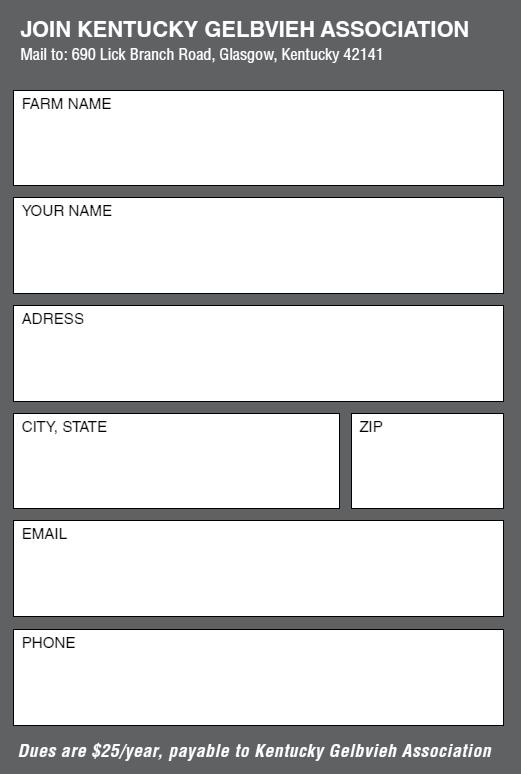
Association or to advertise in this ad, please contact

Cattle for sale at all times.
Meeting modern industry demands:
KENTUCKY GELBVIEH ASSOCIATION
Bulls & Females for sale BRIAN W. DYER, DVM Owner/Manager GELBVIEH/BALANCERS 2050 Glasgow Road Burkesville, KY 42717 Brian, Lauren, Kristen Barry, Emily & Julia (270) 864-5909 FULL CIRCLE FARMS Registered Gelbvieh Cattle Brad Burke 989 Metcalf Mill Road • Ewing KY 41039 KENTUCKY GELBVIEH ASSOCIATION Cattle for sale at all times.
Slaughter, President.......................(270) 556-4259 Joe Piles, Vice President...........................(502) 507-3845 PatTilghman, Secretary/Treasurer..............(270) 670-8449
,
,
670-7814 Pat Tilghman, Secretary/Treasurer.......................................................................................................(270) 670-8449 ASHWOOD SPRING GENETICS Luke & Lindsay Arthur Cynthiana, KY 859-298-8323 BRIAN W. DYER, DVM Owner/Manager GELBVIEH/BALANCERS 2050 Glasgow Road Burkesville, KY 42717 Brian, Lauren, Kristen Barry, Emily & Julia (270) 864-5909 BAR IV LIVESTOCK Barry, Beth & Ben Racke • Brad Racke 7416 Tippenhauer Rd. • Cold Spring, KY 41076 Phone (859) 635-3832 • Barry cell (859) 991-1992 Brad cell (859) 393-3677 • Ben cell (859) 393-3730 Fax (859) 635-3832 • bar4@twc.com FULL CIRCLE FARMS Registered Gelbvieh Cattle Brad Burke 989 Metcalf Mill Road • Ewing KY 41039 (H) 606-267-5609 • (C) 606-782-1367 gbb789@windstream.net BEE LICK GELBVIEHS Eddie Reynolds 277 Old Bee Lick Rd. RICH HILL GELBVIEH Frank McAninch 1341 Iven Godby Road May • Cow Country • 53
David
Joe Piles
President............................................................................................................................(502) 507-3845 Johnnie Moore
Vice President...........................................................................................................(270)
Because of the great support and grassroots advocacy, the Kentucky Livestock Innovation Center funding request was appropriated in the 2024 state budget. We look forward to working with all of our members to promote and advance the livestock industry in Kentucky through the Center.



UNLEASH PASTURE POTENTIAL
WITH PROACTIVE VEGETATION MANAGEMENT
Focus on forage by taking control of costly weed species. Don’t let challenging, and potentially toxic, weeds reduce yields or create animal health risks in your grazing spaces. Alligare’s portfolio of residual and non-residual products allow quality forage to thrive and increase pounds across the scale.
Unleash your pasture’s potential with Alligare’s portfolio of Range & Pasture products including CLEARGRAZE, GUNSLINGER AMP, and PRESCOTT herbicides.


IMPROVE PASTURE. GAIN POUNDS. GROW PROFIT. Alligare.com @Alligare.IVM @Alligare, LLC
54 • Cow Country • May

KEVIN AND RACHEL BARRON
Crestwood, Ky
(502) 905-5851
rkbarron812@gmail.com
SWAIN SELECT SIMMENTAL
12113 Green Valley Dr. Louisville, KY 40243
swainselect.com
swainselect@gmail.com

ROCKING P LIVESTOCK
8308 Orangeburg Road
Maysville, KY 41056
Chan: 606-584-7581
Keith: 606-584-5626
rockingplivestock@maysvilleky.net


facebook.com/swainselectsimmental
Fred & Phyllis: 502-599-4560 Chi & Angie: 502-287-2116

JUDY AND RONDAL DAWSON
1156 Buzzard Roost Road Shelbyville, KY 40065 502-593-5136 • jrdawson22@outlook.com
BRIAN & HEATHER SWAIN
3906 Pottertown Road
Murray, KY 42071 • 270-293-4440
wksbswain@murray-ky.net
Simmental calves are champions of the scale.
They reliably outperform straightbred calves in the feedyard — with better growth, better structure and fewer health problems.
They add pounds without sacrificing marbling, and they come with the IGS Feeder Profit Calculator, which factors genetics, health and management into true value.
Want low-risk, high-potential calves with earning capability?
STAND STRONG SIMMENTAL
406-587-4531 • simmental.org



JEROD METZGER • 270-779-6260


SIMMENTAL AND SIMANGUS BULLS FOR SALE
1939 Huntertown Road
Versailles, KY 40383
BULLS FOR SALE
Chris Allen 859-351-4486
callenuky@hotmail.com
Dr. Henry Allen 859-229-0755

BRET & LAURA JACKSON
BRET AND LAURA JACKSON
Paris, Kentucky
859.533.3718 or 859.707.7200 SIMMENTAL
(859) 533-3718
(859) 707-7200
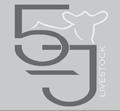
NO LIGHTWEIGHTS
KENTUCKY SIMMENTAL ASSOCIATION Mail to: Laura Jackson 1254 Cynthiana Road Paris, KY 40361 FARM NAME YOUR NAME ADRESS CITY, STATE ZIP WORK PHONE HOME PHONE Call or visit one of these Simmental breeders for cattle that work! www.kysimmental.com Membership Fee is $25.00
JOIN
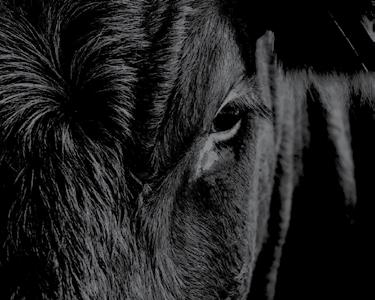

DIAMOND J SALERS
Donald Johnson • 11660 N. Hwy 1247 • Eubank, KY 42564 606-379-1558
DIAMOND J SALERS
WILLIS FARMS
Donald Johnson • 11660 N. Hwy 1247 • Eubank, KY 42564 606-305-8747
Danny Willis • 964 Johnson Rd • Frankfort, KY 40601 • 502-803-5011 drwc21@aol.com • Purebred + Optimizer Breeding bulls & Heifers for sale.
DEL-SU FARM
WILLIS FARMS
Howard & Sue Edwards • 420 Rose Rd • Somerset, KY 42501 606-679-1675 • Jeriah Privett • 606-416-1154
Danny Willis • 964 Johnson Rd • Frankfort, KY 40601
KNOB LICK FARM - BULLS & HEIFERS FOR SALE
Larry
CALENDAR OF EVENTS
THE
502-803-5011 • drwc21@aol.com SALERS
BALANCED BREED
DATE EVENT LOCATION AD APR 30-MAY1 Beginning
School Princeton, KY
4
Livestock Expo Alexandria, KY MAY 4 31st Pasture Perfromance Tested Angus Sale Aldie, VA MAY 4 Ohio Valley Limousin Association Spring Sale Mineral Wells, WV 48 MAY 5 Bridgeview Angus Spring Production Sale Stamping Ground, KY 19 MAY 9 Traditions Hereford Influence Feeder Calf Sale Stanford, KY 11 MAY 10 Louisville Bats Beef Night at the Ballpark Louisville, KY MAY 11 Burns Farms 14th Annual Female Event Pikeville, TN 9 MAY 11 Triple C Back to the Basics Sale Killen, AL MAY 16 Charolais Influenced Feeder Calf Alliance Sale Stanford, KY 11 MAY 18 Brandywine Angus Dispersal Sale Greenfield, IN 3 MAY 18 Holstein Sale Campbellsville, KY 11 MAY 18 West Kentucky Select Bred Heifer Sale Guthrie, KY 4 MAY 20 Certified Hereford Influenced Feeder Calf Sale Lexington, KY 11
25 Ankony Female Dispersal Sale Clarkesville, GA
3 Profit Thru Performance Feeder Sale Lexington, KY
10-13 BIF Research Symposium and Convention Knoxville, TN
12 Electric Fence Troubleshooting School Morgantown, KY
30 KCA Hall of Fame Applications Due
8-14 Lexington Burger Week Lexington, KY
14-21 Louisville Burger Week Louisville, KY
6 CPH-45 Sale Guthrie, KY SEP 5 CPC Fall Field Day Fountain Run, KY 56 • Cow Country • May
Cox • Tina Cox-Lynch • Amanda Cox Gibson • 1315 Knob Lick Road • Irvine, KY 40336 • 606-723-3077 • 606-975-1716
Grazing
MAY
Campbell County Farm and
MAY
JUN
JUN
JUN
JUN
JUL
JUL
AUG
REGISTERED RED ANGUS BULLS FOR SALE
* FREE DELIVERY
296-1044
PERFORMANCE TESTED PUREBRED ANGUS BULLS FOR SALE
Call 270-202-7186 for more info or check out WWW.OAKHOLLOWANGUS.COM for current availability.
POLLED HERFORD BULLS FOR SALE
19–20-month-old Polled Hereford bulls. Good selection. Low birthweight, medium frame. Free Delivery Available. JMS Polled Herefords, Knifley, KY Danny 270-566-2694 Trent 270-566-2000
RED FULLBLOOD LIMOUSIN
BLACK PUREBRED LIMOUSIN
For sale year-round at farms: Cows, bulls, heifers and semen • A C H Holdings, Bowling Green, KY • Stephen Haynes 270-799-8685
REGISTERED BLACK SIMMENTAL BULLS
Many blaze faced. Excellent EPD’s. Semen Tested. Delivery Available. Maximize your profit with proven performance. All bulls qualify for new CAIP cost-share. Adam Wheatley 502349-2665
BREEDING AGE HEREFORD BULLS FOR SALE AT ALL TIMES
Over 60 years of Line 1 Hereford Genetics. Groups of open and
for sale at all times.
270-668-7126
RED ANGUS, SIMANGUS, CHAROLAIS, ANGUS FOR SALE
Red Hill Farms, Lafayette, TN, 615-666-3098
Bart, Sarah and Ty Jones
Gordon and Susan Jones, 270-991-2663
Visit us online - www.RedHillFarms.net
Contact us for cattle and semen availability.
Annual Production Sales:
More Than a Bull Sale – 3rd Saturday in March
Maternal Monday – 3rd Monday in May
Bulls & Females of Fall Sale – Last Saturday in October
HOT MAY DEALS FROM REDBARN
ESCH HAY TEDDERS-18-32 ft units
Cloverdale 420-500-650 Mixers in STOCK New Holland 145- double beater spreader $7500 JD 567 round baler-$19,995 twine only Bearclaw construction trailer- 1640’ton New Holland 195- double beater spreader $18,500 New Holland Bale WagonH9870 $142,500 JD 566 round baler- twine only $9500 John Deere 6300-2wd-Ldr16 speed $35,000 Artex SB 200-800
Spreaders- HS 430 Spreader- $21,500
MEYER F510- mixer in stock $60,000
Vermeer 555 - XL in stock- twine-$10,500
Silage time-10 pull type choppers in stock Silage Blowers- IN STOCK Silage Wagons-16-20 ft
18 IN STOCK-Lancaster Ky
Meyer- miller pro- H S- all prices and ranges
MEYER- 18 ft- dump carts - 2 super units!
Finance options available
Call Charlie today 859-608-9745
WWW.REDBARNANDASSOCIATES.COM

May • Cow Country • 57 CLASSIFIEDS
*
ew
FOUR WINDS FARM N
Castle, Kentucky (502)
Chambliss Hereford Farms.
REGISTERED ANGUS BULLS Performance Tested • Prosperity, Growth Fund and Sure Fire • 606-787-7307
INDEX A.W. Graham Lumber 8 Alligare 54 Allison Charolais 8 Arrow Farm Equipment 2 Blue Grass Stockyards 11 Brandywine Cattle Co. 3 Bridgeview Angus Farm 19 Burns Farm 9 Central Kentucky Ag Credit 60 Gray Lane Angus 4 Gro-Tec Inc. 53 Hampton Premium Meats 18 Kentucky Angus 50 Kentucky Cattlemen's Ground Beef 10 Kentucky Gelbvieh Association 53 Kentucky Hereford Association 49 Kentucky Salers Association 56 Kentucky Simmental Association 55 Kuhn North America 11 My Team Cattle & Crop Insurance 21 Oak Hollow 5 Ohio Valley Limousin Association 48 Pogue Chevrolet 21 Red Barn and Associates 27 West Kentucky Select Bred Heifer Sale 4 Y-Tex 17
bred heifers available
AD
ADVERTISE IN OUR CLASSIFIEDS
FOR FIVE LINES OR GET A BOX THIS SIZE FOR $105
KATIE PRATT (859) 278-0899 MULTI-ISSUE DISCOUNTS AVAILABLE
$15
CALL

Opportunity on Our Doorstep – BIF Research Symposium and Convention in Knoxville this June
Darrh Bullock Beef Cattle Extension Professor
The days are getting warmer, the grass is green, and we are getting some good spring showers at least at the time of this writing. (Who knows what it’s doing now.) All are indicators that summer is on its way. That is especially exciting news this year because the Beef Improvement Federation Annual Research Symposium and Convention is coming to Knoxville June 10-13 (https:// beefimprovement.org/2024-symposium/).
This organization is based in the U.S. and Canada but gets international attendance for the convention. It is the only gathering of beef cattle producers, breed association representatives, Extension educators and researchers, that I am aware of, that come together to tackle issues on improving the product that we all love so much - BEEF. This is the closest the convention has been to Kentucky in many years. If you are interested in interacting with innovative cattle breeders, industry leaders and top beef cattle educators and researchers from across the country and world and/or you would like to expand your understanding and knowledge of both well established and cutting-edge technologies, this is the place to be.
The overall theme of this year’s BIF educational program is “Breeding a more adapted and efficient cow.” With the convention in Tennessee, there will be a strong focus on the primary adaptability issue that we deal with in this area –fescue’s impact on our cow herds. The BIF symposium is structured so that there are general sessions in the mornings and breakout sessions in the afternoons. It is a very interactive environment, and discussion is welcomed and encouraged. I have no doubt that some of the information will be very challenging for many of you, it certainly is for me. But I also have no doubt that there will be pieces of information that every one of you can take home and put to work in your operation.
program on the evening of June 10. This will be followed by two days of general and breakout sessions as described previously, with breakfast and lunch provided. An offsite social will occur on the evening of June 11. If you are interested, there is an add-on tour on June 13 that will explore East Tennessee.
Another draw for young cattle producers is a program called the Young Producer Symposium that is targeted directly at this demographic. This program precedes the main symposium on the afternoon of June 10. The program is packed with useful information for those that are trying to get started in the cattle business. It extends past genetics (although, you get that too) and addresses other topics like land loss and estate planning and a panel discussion of innovative producers from across the nation. The definition of “young” is at your discretion, but it is intended for the truly young, not just young at heart. The best thing about attending this session….no additional costs!

The University of Kentucky Beef Extension group and the Kentucky Cattlemen’s Association are represented on the organizing committee and have been actively involved in planning this year’s symposium and convention, and we would love to see a good representation from Kentucky attend. Kentucky has had a strong presence at BIF for years and our own Dr. Gordon Jones is the current vice-president and incoming president of the federation. Dr. Jones has always been a strong advocate for lifelong learning, and this is a great opportunity for Kentucky cattlemen and cattlewomen to experience a top-level educational event at a reasonable price and close to home.
It is often said that the greatest exchange of ideas at the BIF symposium happens in the halls and at social events, so there is no shortage of those opportunities. The convention starts with a reception and a short educational
The Beef Improvement Federation exists to support the advancement of technologies that are developed into the tools that we all use for selecting better cattle. This started in the 1960s by setting uniform standards for bull test stations, which at the time was the only way to compare cattle from different operations. When statistical methods were developed that allowed for national genetic evaluations, BIF was on the cutting edge of advancing
58 • Cow Country • May
the technology, which saw the introduction of Expected Progeny Differences (EPDs). The next major advancement was the development of genomics technologies, which identified DNA markers that could be associated with specific traits. BIF worked tirelessly to see the merging of genetic evaluations and genomics information into a system that allowed producers to continue using EPDs that they were used to using but with increased accuracy through the development of Genomically Enhanced EPDs. The reason that these technologies have been so successful is because of the diversity represented in BIF (beef producers, breed associations, genomics companies, AI companies, Extension educators and research scientists) all working for the most technology advanced and user-
Spring-Calving Cow Herd
friendly methods of selecting beef breeding stock.
I hope you will consider joining me for this year’s Beef Improvement Federation Research Symposium and Convention June 10-13 in Knoxville, Tennessee. Contrary to the title of the event, this will not be a group of dry researchers talking about things that you have no understanding of (although there will be some of that in some of the breakout sessions), but rather practical talks on information and management practices that can help improve your operation. You will expand your knowledge of beef cattle management and interact with some of the best minds in the beef industry. Let’s take the Bluegrass to the Rocky Top!
TIMELY TIPS FOR MAY
• Continue supplying a high magnesium mineral until daytime temperatures are consistently above 60 degrees F.
• Improve or maintain body condition (BCS 5) of cows before breeding season starts. If necessary, increase energy intake even on pasture.
• Bulls should have a breeding soundness evaluation (BSE) well before the breeding season (at least 30 days). Contact your local veterinarian to schedule a BSE for your herd sires. They should also receive their annual booster vaccinations and be dewormed. I often get questions regarding deworming and reduced fertility in bulls. Dr. Phil Prater at MSU and I examined this and found no effect of deworming on bull fertility.
• Schedule spring “turn-out“ working in late April or early May, i.e. at the end of calving season and before the start of breeding season. Consult with your veterinarian about vaccines and health products for your herd.
“Turn-out” working for the cow herd may include:
• Pre-breeding vaccinations
• Deworming
• Replacing lost identification tags
• Sort cows into breeding groups, if using more than one bull
• Insecticide eartags (best to wait until fly population builds up) “Turn-out” working of calves may include:
• Vaccinate for IBR-PI3, Clostridial diseases and pinkeye
• Dehorn, if needed (can be done with electric dehorner and fly repellent during fly season)
• Castrate and implant male feeder calves (if not done at birth)
• Deworm
• Insecticide eartags
• Consider breeding yearling replacement heifers one heat cycle (about 21 days) earlier than cows for “head-start” calving. Mate to known calving-ease bulls.
• Record identification of all cows and bulls in each breeding group.
• Begin breeding cows no later than mid-May, especially if they are on high endophyte tall fescue. Cows should be in good condition so that conception occurs prior to periods of extreme heat.
• Consider synchronizing estrus in all cows. Exposing late-calving cows and first-calf heifers to a progestin (MGA feed or CIDR device) for 7 days before bull turn out increases pregnancy rates and shortens the next calving season.
• Choose best pastures for grazing during the breeding season. Select those with the best stand of clover and the lowest level of the fescue endophyte, if known. Keep these pastures vegetative by grazing or clipping. High quality pastures are important for a successful breeding season.
• If using artificial insemination:
• Use an experienced inseminator.
• Make positive identification of cows and semen used. This will permit accurate records on date bred, return to heat, calving date and sire.
• Good handling facilities and gentle working of the cows are essential.
• Choose AI sires that will meet your goals and resist the temptation to get your cows bigger. Using sires with higher accuracy EPDs will reduce risk.
• Observe breeding pastures often to see if bulls are working. Record cows’ heat dates and then check 18-21 days later for return to heat.
Fall-Calving Herd
• Contact your veterinarian and pregnancy diagnose the cow herd. If a large animal veterinarian is not available in your area, consider taking blood samples for pregnancy diagnosis. Remove open cows at weaning time.
• Plan marketing program for calves. Consider various options, such as maintaining ownership and backgrounding in a grazing program, or precondition and sell in a CPH-45 feeder calf sale.
• Initiate fly control for the cows when fly population builds up.
• Calves may be weaned anytime now but you can take advantage of the spring grass by leaving them on the cow a while or weaning and grazing.
Stockers
• Keep calves on good pasture and rotate pastures rapidly during periods of lush growth. Manage to keep pastures vegetative for best performance.
• Provide mineral mix with an ionophore.
• Implant as needed.
• Control internal and external parasites.
General
• Harvest hay. Work around the weather and cut early before plants become too mature. Harvesting forage early is the key to nutritional quality. Replenish your hay supply!
• Rotate pastures as needed to keep them vegetative.
• Clip pastures to prevent seedhead formation on fescue and to control weeds.
• Seed warm-season grasses this month.
May • Cow Country • 59

Your Local Ag Lender LOANS FOR LAND, FARMS & HOMES IN THE COUNTRY 859-253-3249 | AgCreditOnline.com NMLS# 604727


































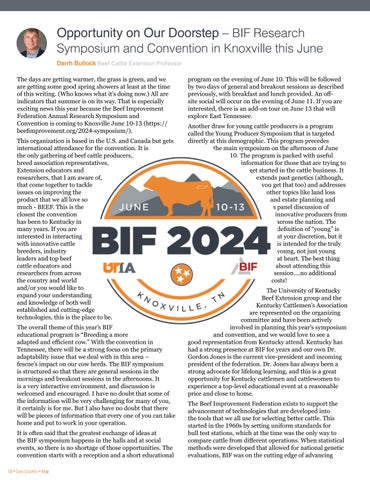






































































 Kelly Baird Director of Communications and Events
Kelly Baird Director of Communications and Events
































































































































































































































































































































